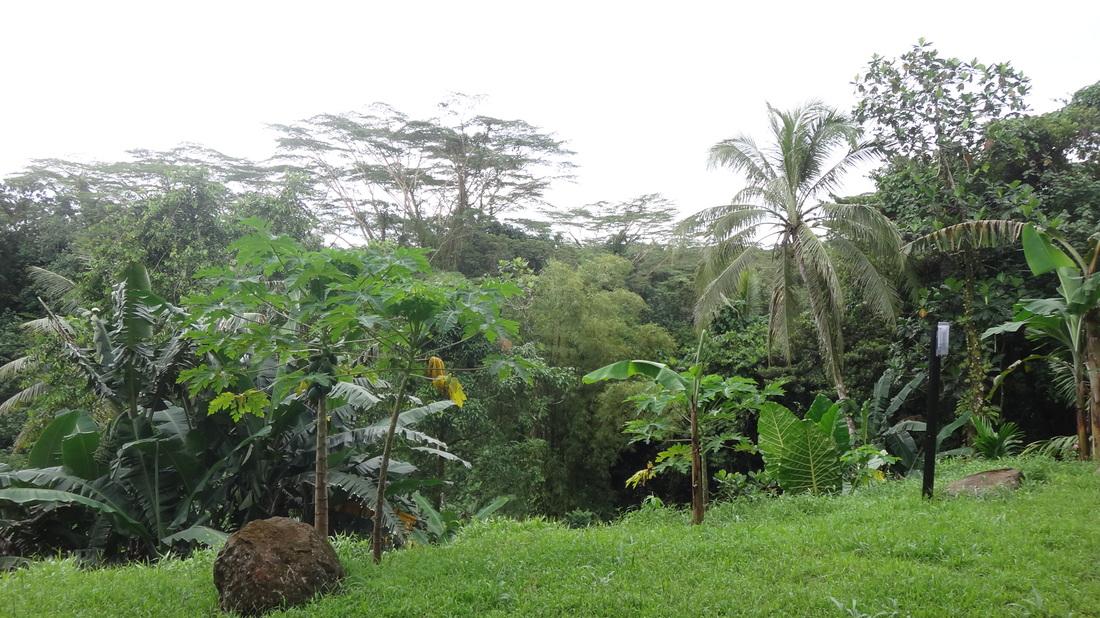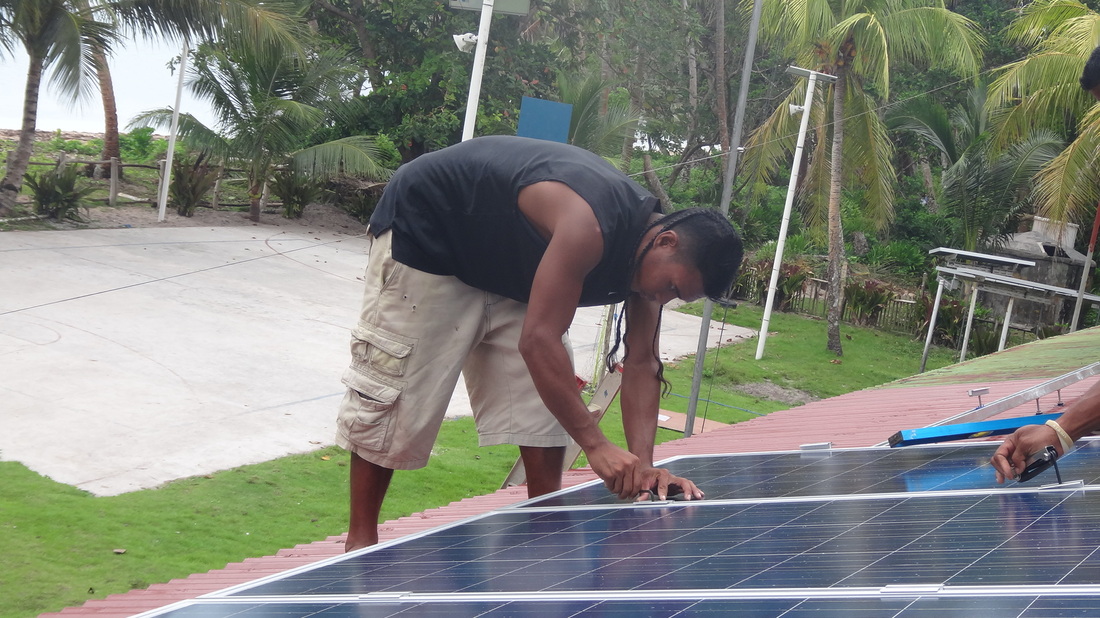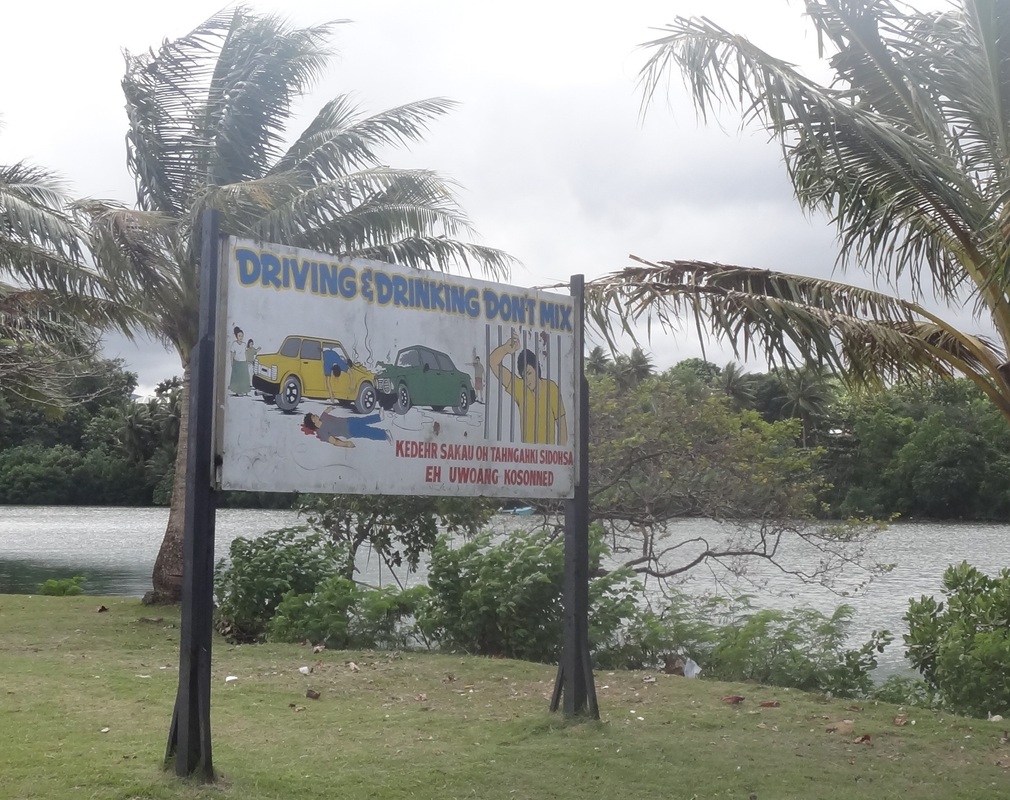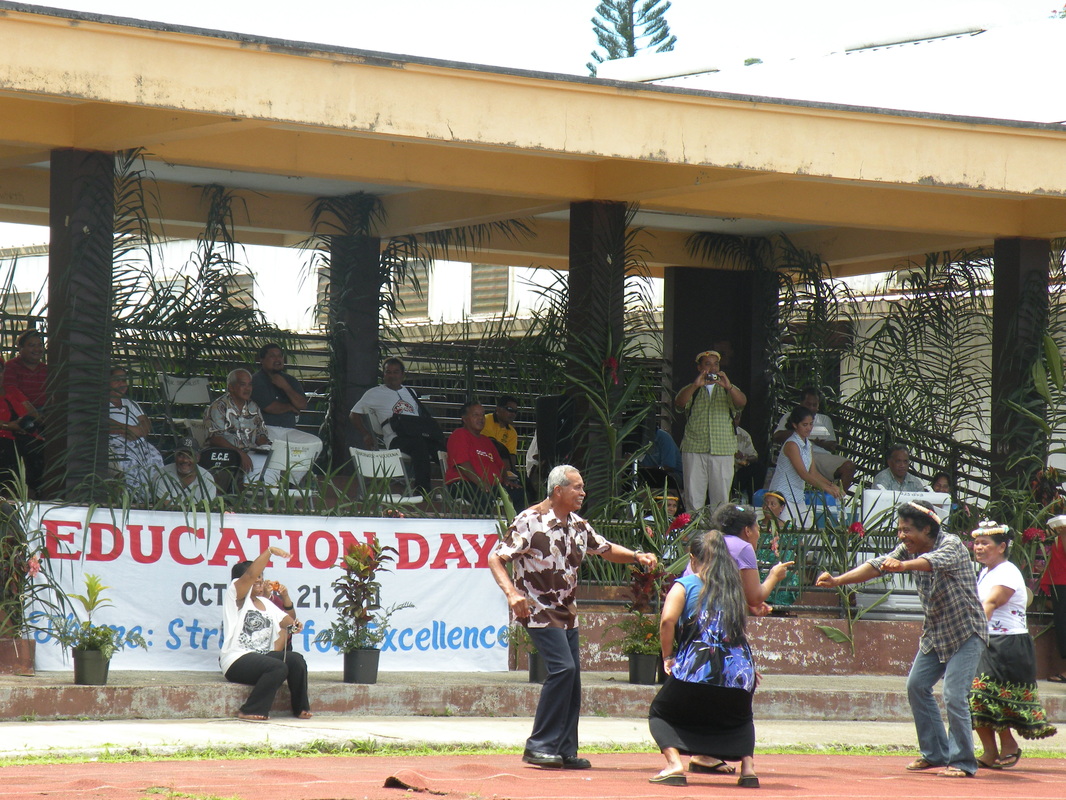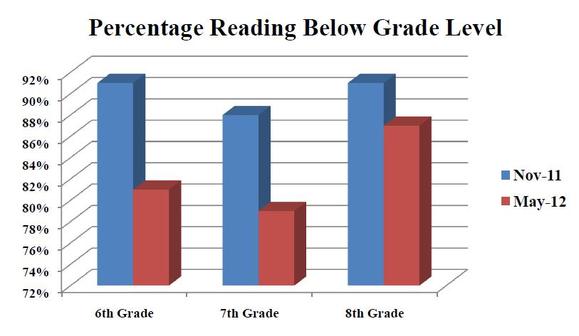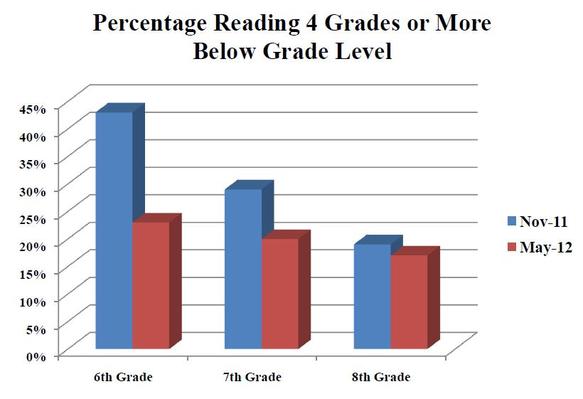 Last sights of the Pohnpeian islands As I wrote in my last entry, I wanted to keep this blog going for another month or so, writing on my life post-Pohnpei. Obviously, I failed miserably. I have been plenty busy though!
Like I expected, leaving Pohnpei was bittersweet. Seeing friends and family back home and enjoying some modern amenities (i.e. hot showers, orange juice, etc.) were very welcomed. Needless to say though, I miss all the friends I made in Micronesia very much. Not to mention the weather. Even when I got back on the last day of May, I was freezing! My blood very much thinned out and I’m still recovering! Since leaving the island though, I have not had a shortage of adventure.
My flight from Hawaii to San Francisco was delayed, making me miss my San Fran-NJ connection and hang out in the airport for seven hours, waiting for the red-eye. If I recall correctly, I was traveling for about 33 hours, being awake for 40 hours straight since I couldn’t get any shut eye on the plane. Unsurprisingly, the jet lag kicked me in the butt. The reverse culture shock kicked in the second I stepped in the Hawaii airport. The amount of people, most of them being white, was a slight adjustment, although it wasn’t earth-shattering. When I first got in the car leaving the Newark airport I forgot my seat belt since no one wears them on island. Then traveling in speeds over 70mph took me aback.
Despite these little things I had to get used to again, I had no major reverse culture shock for my first month back. Everything changed though when July arrived and I moved down to Washington, DC. Searching for housing in a relatively unknown area is a daunting task in itself, but it was especially so after having spent the previous eight months on a tiny island in the middle of the Pacific. I was very blessed to find a house with three other solid Christian guys and finding a solid group of friends. Throughout July and August though there were many moments when reverse culture shock was literally paralyzing.
One that sticks out is a normal grocery run shortly after moving in. There were so many options, so many people, so much of everything. I ended up getting the bare minimum and leaving as fast as possible! Another memorable experience was going to a local church service. The summer before my senior year when I was interning in DC, I attended this young adult service called Frontline. In particular from those services, I remember the worship being awesome - drums, several guitars, lights - the whole shebang. I was looking forward to returning to these services and participating in corporate worship again. Well, be careful what you wish for. The noise, the large group of people, the intensity (they even have a fog machine!), was overstimulation to the max. It felt like I wanted an appetizer and got a 20-course meal instead. It took months for me to get used to it, and even now I'm still adjusting.
Other changes were more subtle that impacted my psyche. My office has been on the 9th floor, surrounded by buildings well over 40 stories. In comparison, the tallest building on Pohnpei is three stories – and there’s just one of those. The best word to describe everything is overwhelming. To those who will go through reverse culture shock in the future, my advice is simple – just get through it. Lean on friends and family, put your head down and do what’s necessary. With time, everything gets easier until it’s normal again.
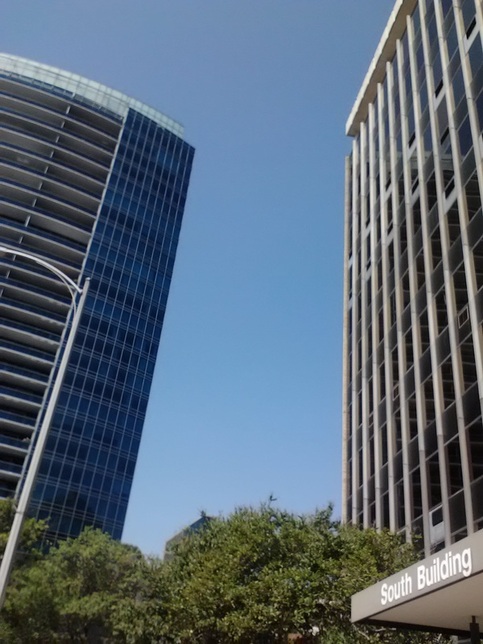 Arlington, VA - My office building on the right, surrounded by what to me, were skyscrapers Despite being thousands of miles from Pohnpei, the lessons I learned and experiences I had visit me every day. I have worked intentionally to visit my memory bank, but most often, Pohnpei comes back with no prompting. When riding my bike back from the Metro in the dark, I get flashbacks of riding on the Pohnpeian roads. Once, I saw a big dog and instinctively got in protect mode, wishing I had a stick, and ready to fight the dog. I then remembered I was in Suburbia, USA and the dog was on a leash. In restaurants, several times I have received perplexed looks after saying “Kalanghan” (Pohnpeian for “Thank you”) when the waiter brought me water. I also had folks thinking I was cursing after I screamed “KARAKAR!” after touching a hot pan (“Karakar” is Pohnpeian for “hot”). So what have I been doing? Over the past six months I have been leading the Good Steward Campaign, an initiative organizing young Evangelicals (i.e. young adults) around environmental stewardship and climate change. Our target states are Pennsylvania, Virginia, and North Carolina. I have been traveling around these states organizing students, campus ministers, and clergy. My favorite part has been organizing events, bringing in various speakers to lecture at college campuses and church services. If you want to check out the blog I transitioned to maintaining after this one, go here! Since I left, MAHI International’s English program has been going on strong! The 40 iPads we acquired are being put to good use and three new volunteers for the English program will be arriving on island shortly. Suffice it to say, I’m very jealous of them! There’s no doubt that I want to go back to Pohnpei again someday. Whether that will be a mere visit or a longer-term stay is to be determined. For now though, I’ll look forward to the next time I find myself back on Pohnpei, and will continue to carry the memories of the people and the experiences with me every day. 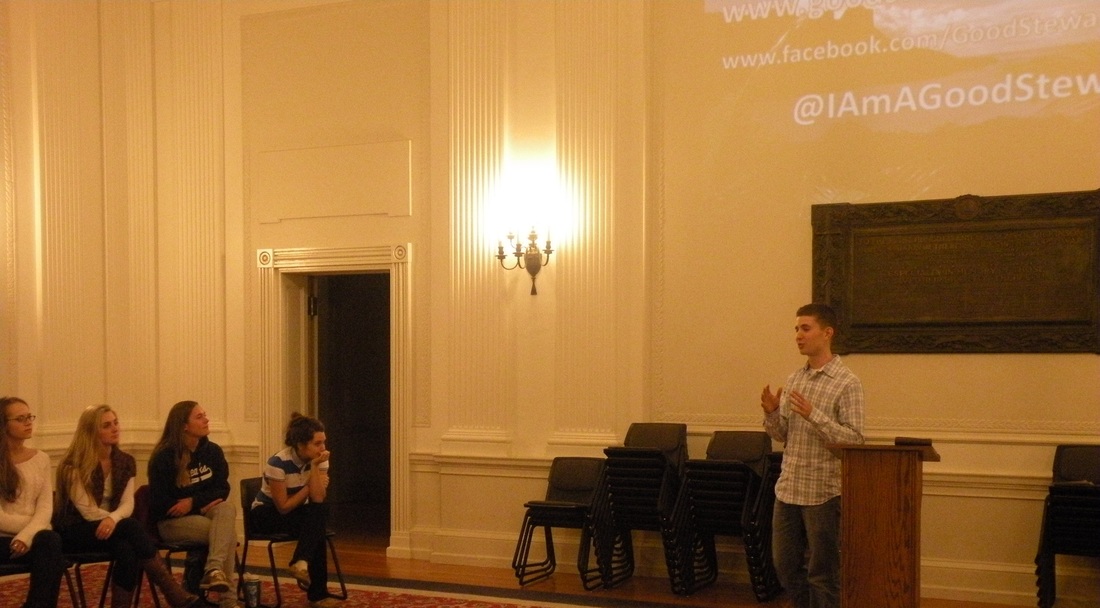 Speaking at my alma mater, Dickinson College, in November for the Good Steward Campaign  With my brother and Dad at a Rutgers-Temple football game in Philly 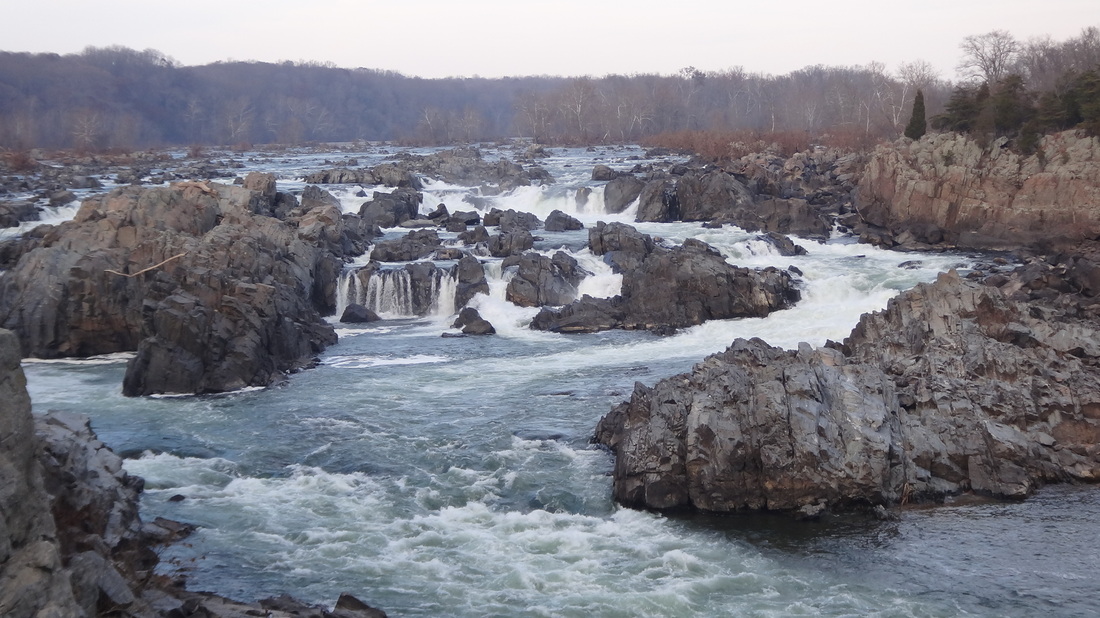 One of the biggest things I have missed since Pohnpei is getting out in open space. Great Falls in northern VA has been a welcome place to retreat to 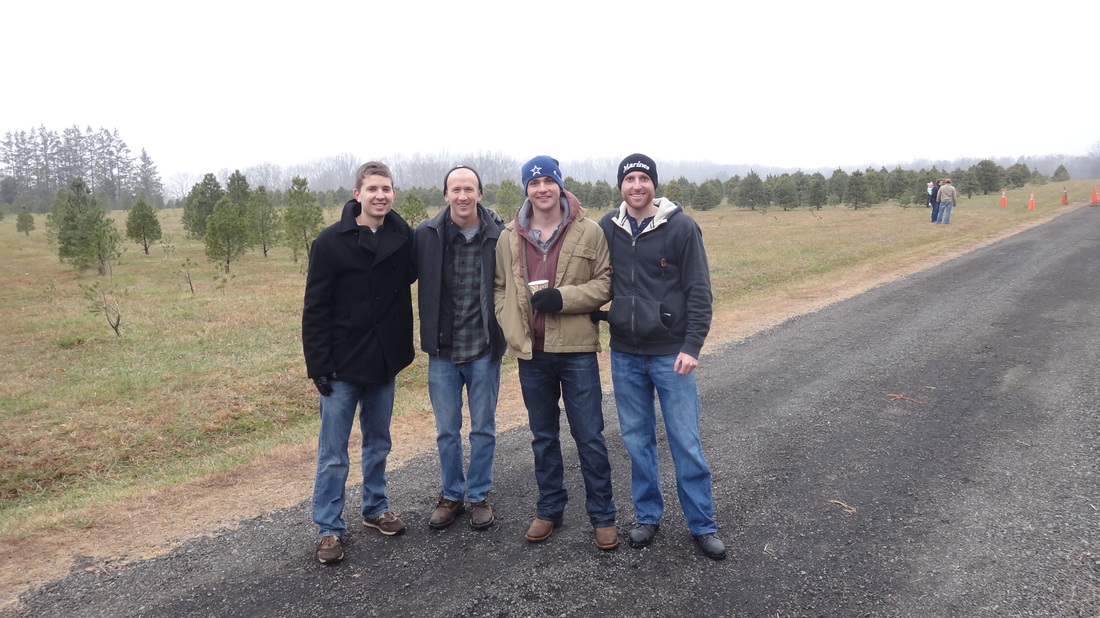 My housemates and I after cutting down our Christmas tree 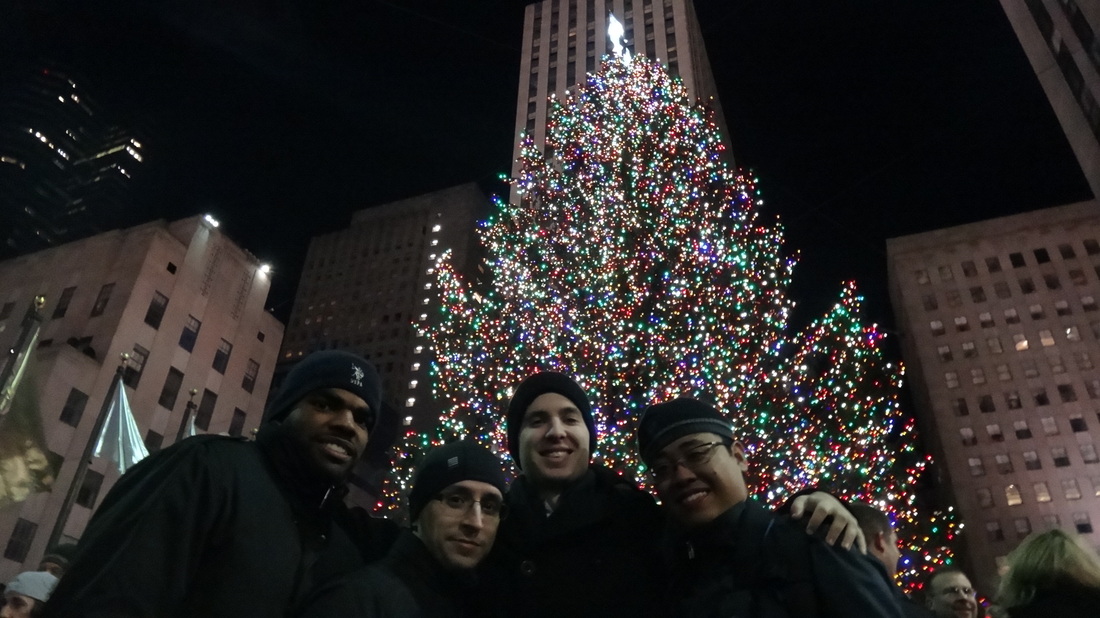 My college roommates and I in NYC 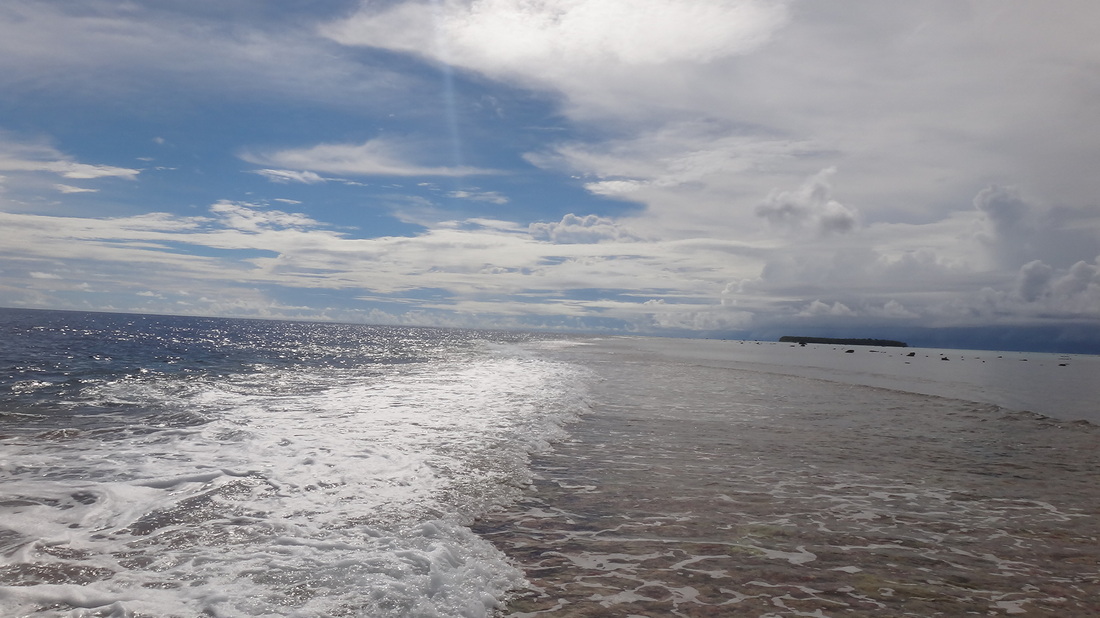 How I long for wide open spaces like this! Standing on the reef looking towards Pakin Atoll
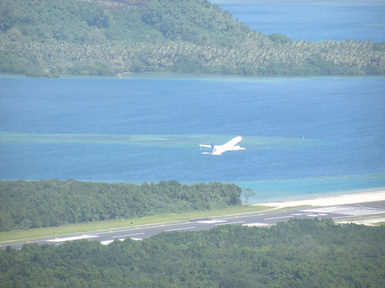 Shot from Sokehs Ridge of liftoff at Pohnpei International Airport Quick disclaimer: this post is going to involve a fair amount of cheese, so you might want to go get some wine and crackers. Bad joke, my apologies. Anyways --- I can’t believe it, but the day is finally here for me to say goodbye to these islands, at least for now. The past few weeks I have been asked often how I feel about leaving. The best and only word to describe it is bittersweet. While I am very excited to see family and friends, and I’m not exactly dreading taking my first hot shower in eight months or watching the Yankees, there are so many things that I am going to miss about Pohnpei.
For starters, look at my backyard:
How do you beat that? I truly have been aesthetically spoiled here. Every day I get to see postcard views – a privilege I have tried not to take for granted. More than just the images associated with an “island paradise,” I’m going to miss the work I have been doing here. Despite the challenges, (if you have read a word of my blog you know what I’m referring to) it has been extraordinarily rewarding work. Working every day alongside others with a shared purpose has been truly awesome, in every sense of the word. Quick side note: our iPad grant has become official – so a major Pohnpeian “Kalanghan” (Thank You) to AUSTRALIA!!! Thanks to the folks down under, MAHI International has received a grant for a little over $20,000 to purchase 40 iPads and rugged carrying cases! I’m also going to miss the slower pace here and the more relaxed approach to life. While there are some negatives to “island time,” it has been gratifying to escape the high-stress world that spawned the 24/7 news cycle. You would be amazed how simple life can be, and how much easier it is to connect with yourself and others, when you aren’t constantly distracted by the bells and whistles of modern America. As I mentioned in my last post, I am going to miss the incredible randomness of Pohnpei. Every day is an adventure where I might witness something I have never seen before. Pohnpei comes with many surprises, both good and bad. It wasn’t always fun when the power went out for hours, but where else in the world can you see a four-door sedan raking a softball field? I think American culture has indoctrinated most people to love routine – no one likes change of any sort. Just think of how the general public reacts when a road is shut down for construction or if the Facebook format is altered. People flip. I have learned here more patience than I thought was humanly possible and with that the mentality to just roll with the punches. There are gems in the unexpected, not just headaches. More than anything though, by a long shot, what I am going to miss most about Pohnpei is the people. The friendships and mentors I have gained here have truly been life-changing. I can’t put into words how blessed I feel to have had the opportunity to work alongside with people like John, Mr. B and many others. This island will forever be linked with these people and for that Pohnpei will always have a special place in my heart. I have no idea who reads this blog, but I’ve accumulated a sizable following somehow. While I don’t know who you are, I want to take a moment and encourage anyone reading this to take the opportunity to get out and serve. And if at all possible, get out of your comfort zone. I of course would recommend MAHI International as a great organization to volunteer for. Currently we are looking for more English instructors to expand our program next year! This has been one of the most challenging, but also one of the most rewarding experiences in my life. Whether you can make it out to Pohnpei or not, get off the couch and go do something. I guarantee you won’t regret it. This experience has been an adventure. It really is difficult to put everything into perspective at the moment. I’m sure though that I will look back at my time in Micronesia with fond memories, recalling the joys, the trials, everything I learned, our successful program, and most importantly the people that made this tiny island in the Pacific my second home. So Pohnpei, Kalanghan and Senek Pwurodo! (Till I see you again!) Drew P.S. Despite my leaving Pohnpei, I still plan to keep this blog going for at least another month or so. In my reading of different long-term volunteer abroad blogs before I came to Pohnpei, I couldn’t find one that talked about reverse culture shock and re-adapting to one’s former world. I also have learned from past trips and experiences that most of the time you learn the most from a trip or experience not during that period of time, but after. I look forward to learning more and sharing what I have learned in the weeks ahead once I am back in part of the world that most people actually knows exists! Also, I have been asked many times, “What’s next?” I have an answer and I’ll leave that to a future post. For those of you who STILL need reminding of where the heck Pohnpei is, check out this map of my flight home. The island hopper plane will be making stops in Kwajalein and Majuro before crossing the International Dateline heading to Honolulu. After a few hour layover it's to San Francisco, before finally the last leg across the country to the best state in the union, New Jersey (stop laughing). In total, I will be traveling 8233 miles in 24 hours.  One last waterfall jump (for now!) 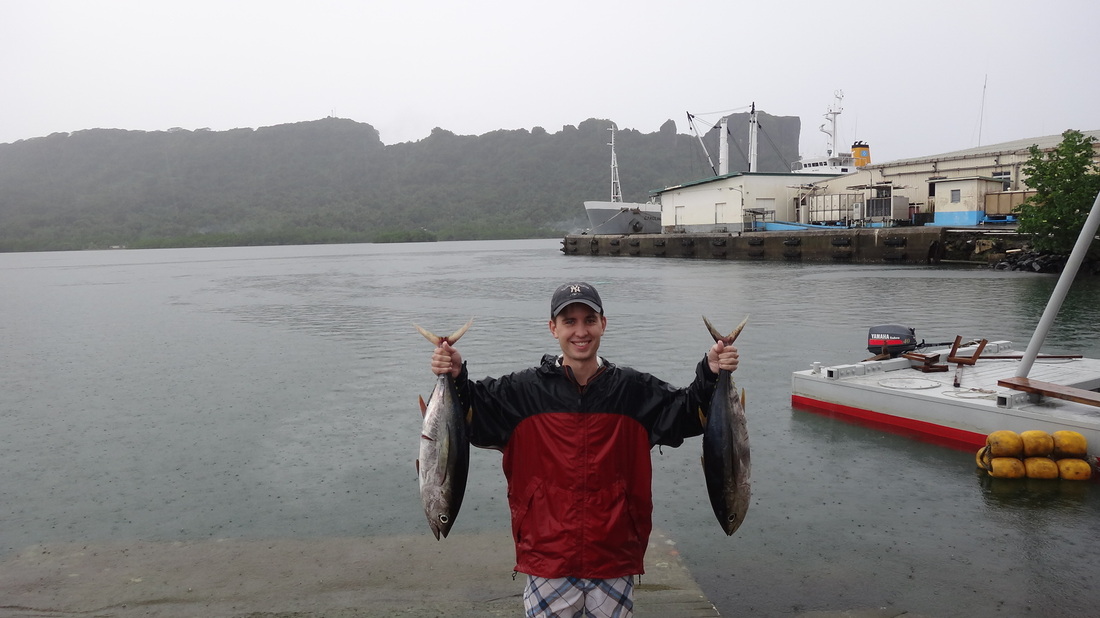 My last day on Pohnpei was a wet one! The series of events went like this out on the ocean: dry heave, vomit, pull a fish, vomit, pull a fish, repeat! I usually don't get seasick but it was worth it! Here's me with a couple of good sized Yellowfin Tuna.
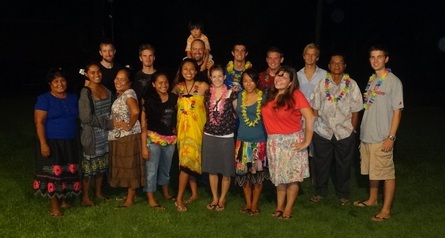 MAHI International and friends at the recent volunteer appreciation dinner _
I have been working on this post since I first arrived in Pohnpei. There were just so many things that were unique and distinct to Pohnpei that I started compiling a list. Every time I thought of posting it I would find something new and crazy, so I decided it was best to post it shortly before my departure.
I would like to say that if you ever plan on coming to Pohnpei, I'd recommend not reading this. Before I came I talked with my friend Alex who introduced me to Pohnpei. I tried to pick his brain to learn as much as I possibly could about this place and I consistently received vague answers. His response was essentially, "You just got to experience it for yourself man." While I might have been slightly frustrated at the time I'm very glad Alex allowed me to discover Pohnpei and all its idiosyncrasies on my own. Even if I did know all of this before I arrived though, I would still have to experience it. For example, I can tell you how there are crazy dogs all over the roads, but it’s entirely different when you have to walk home a mile at night in the pitch dark, navigating through all the dogs and beating off the aggressive ones with a stick.
That said, here’s a little taste of what makes Pohnpei, Pohnpei:
-Locals talk with their face. It’s very difficult to have a conversation with someone without having eye contact. I don’t think I’ve ever heard a local respond to a question with “yes.” Rather, they raise their eyebrows.
-Why did the chicken cross the road in Pohnpei?
a) It was being chased by a naked child with his fingers covered in Kool Aid
b) It was being chased by a pregnant dog
c) It was about to be run over by a beat-up pickup truck
d) It didn’t have a reason – chickens are incredibly stupid animals
e) All of the above
Correct answer: E, all of the above
-98% of all people wear zoris (i.e. flip flops) all the time. The other 2% is cowboy boots. (I'm not counting the few people who just go barefoot.) A trend among many Pohnpeians is the desire to be a cowboy. I find it very amusing every time I see Pohnpeians listening to country music.
 A teacher in one of our adopted schools rocking cowboy boots! -To show the size of something with your hands, you don’t hold your hands a certain distance apart. You put your hand on your arm for the distance of whatever object is from the tips of your fingers. So if you caught a fish a couple feet long, you would put your hand on your opposite arm a couple of feet.
-There is a Facebook epidemic here. Every time I walk into any place with computers, over 95% of the time Facebook is on the screen. The other 5% there’s some sort of computer game. Apparently, before they had Internet, solitaire was the king time drain.
-If Pohnpeians lived in New York City, many would be seriously injured if not killed. What I’m referring to is the Pohnpeian tendency to walk in the middle of the road without a care. Crossing the road? Take your time, what’s the rush? There are hardly any sidewalks anywhere and most roads are narrow as the jungle has creeped in on both sides.
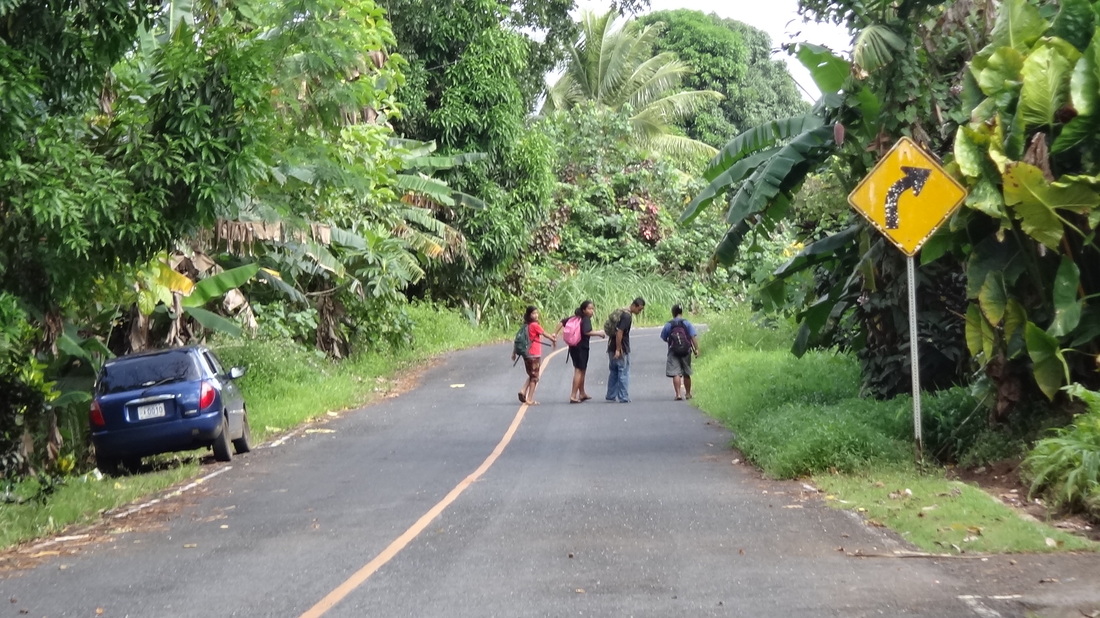 Students walking home using the local path, I mean road -If you ever come to Pohnpei, don’t be surprised or “weirded out” when the locals stare at you and continue staring after you make eye contact with them. First of all, you’re a “menwie” (men-why), i.e. a foreigner, so you don’t exactly fit in around here. Sometimes I feel like I should get that t-shirt that says “Keep Staring, I Might Do A Trick.” I got used to it pretty quickly though.
-You don’t need to iron clothes in Pohnpei. It’s so humid, no matter how wrinkled your clothes are, if you spray some water on them, the wrinkles will come out within 10 minutes or so.
-The multiple hairstyles here are awesome! Pohnpeians can rock the craziest hairstyles, I love it. I have multiple pictures to back up this claim, but here’s a couple:
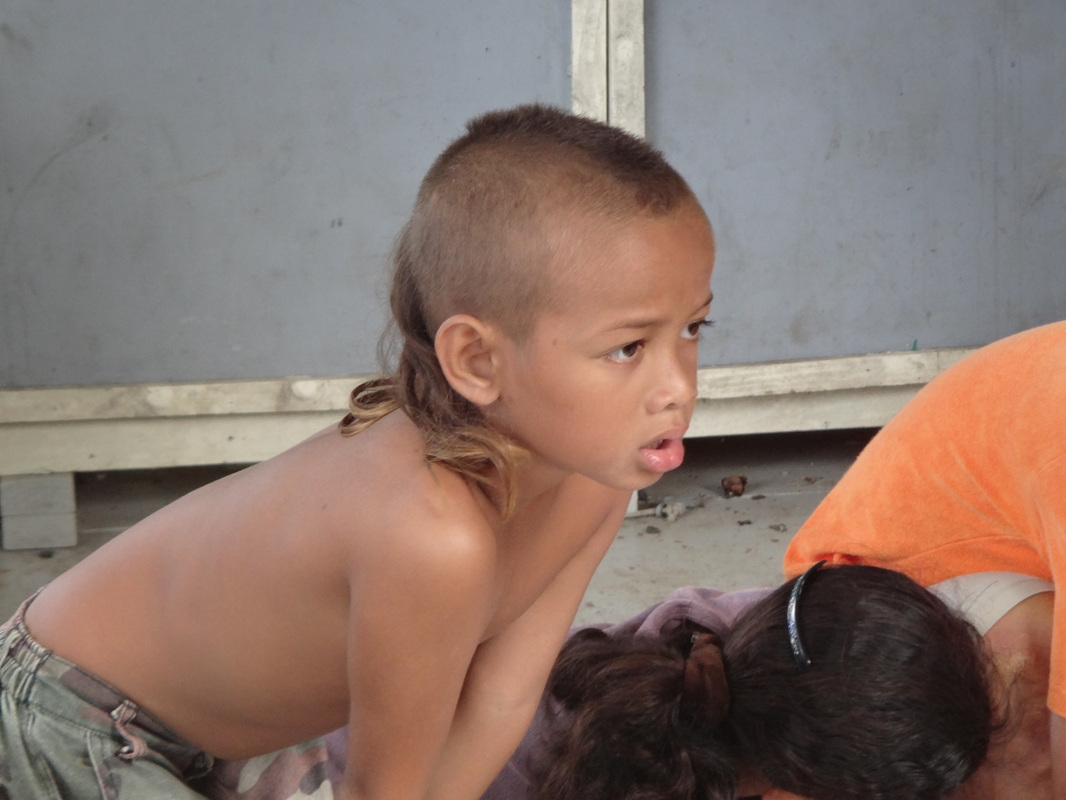 Slight mohawk with a mullet twist. Classic. _-It’s not unusual to see a male, at any age, taking a leak on the side of the road, at any time of the day. (Sorry, I don't have any pictures of this!)
-I’m willing to bet that around half of the cars on Pohnpei wouldn’t pass a general vehicle inspection in the States. Some cases are more obvious than others!
-Abandoned cars litter the roads all over the island. Most of the time these vehicles become part of the jungle environment as plants start growing in and around them. Occasionally, like in a picture below, the cars are taken away by a recycling facility here. In addition to cars, the Kolonia harbor is also littered with abandoned ships. All of it contributes to what makes Pohnpei, Pohnpei.
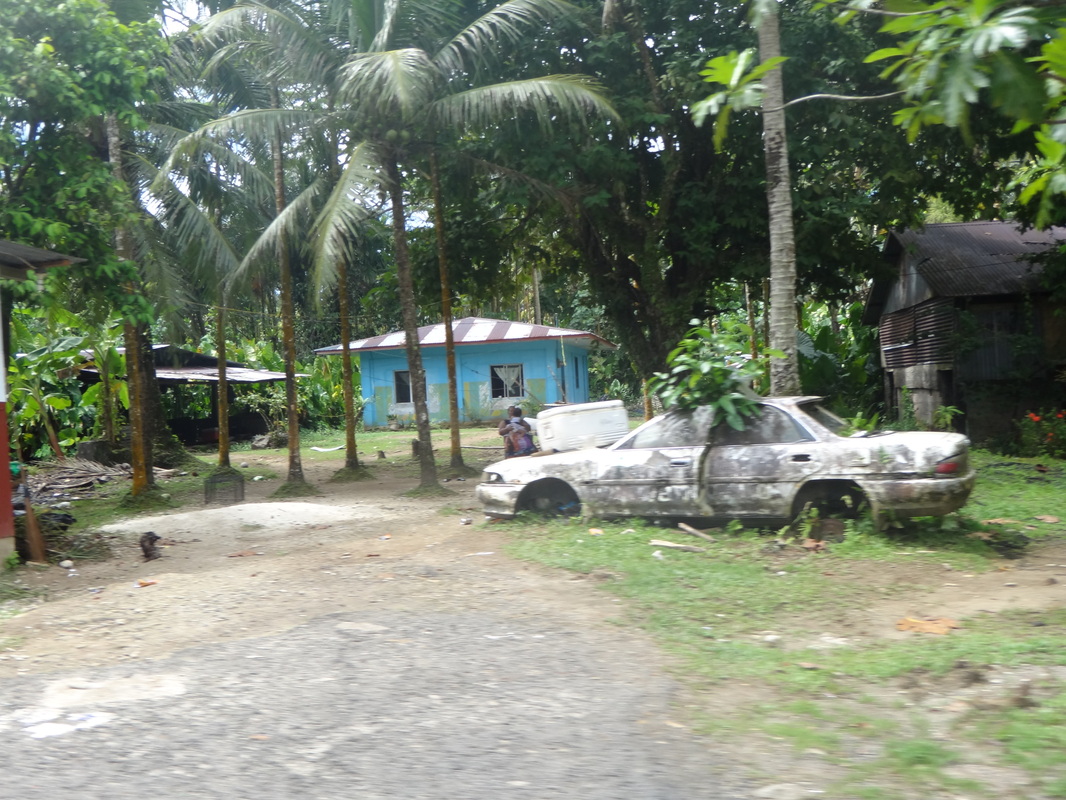 You can see a tree clearly growing directly in the car here! 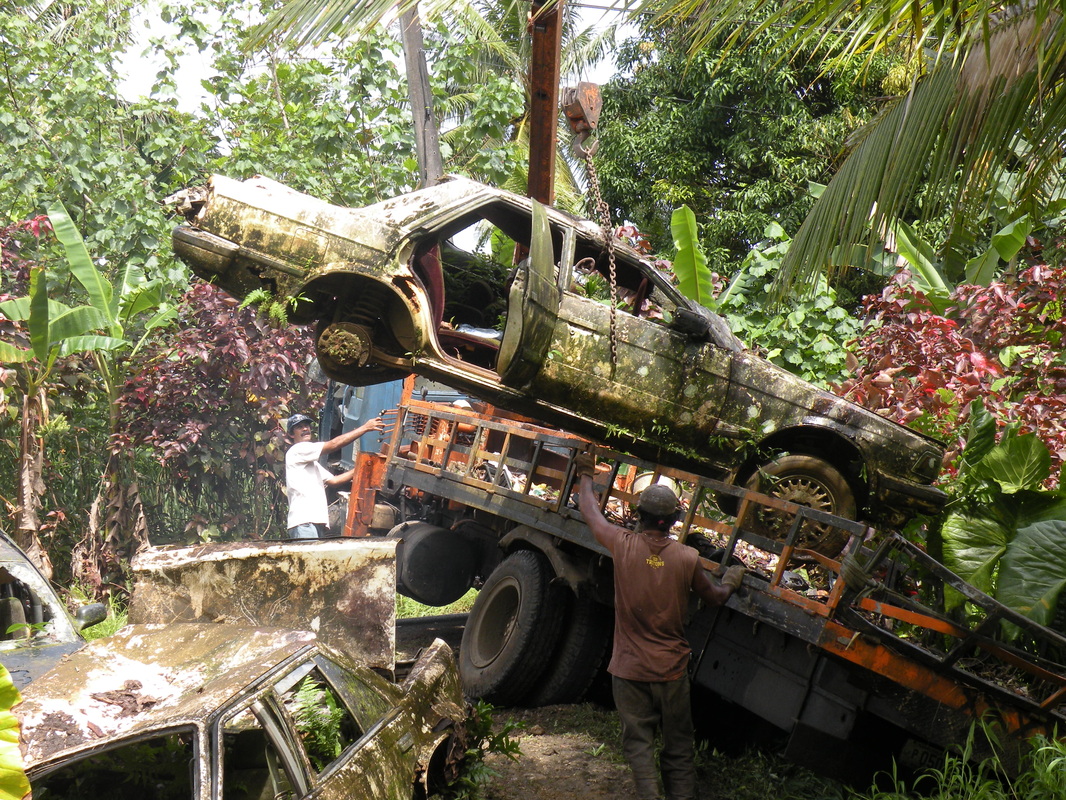 We had some cars moved that were close to our property - you don't see this every day! -It is perfectly acceptable and appropriate to spit at any place or time, regardless of age or gender.
-Occasionally when driving along the road you smell the strong odor of burnt hair. It’s rather gross. It’s actually not the smell of burning hair, it’s the cooking of turtle.
-Many guys wear female clothing and accessories, not knowing they’re associated as girly things. I’ve seen guys wear female rings, earrings and paint their nails. The funniest part is it’s usually the guys who are going for the “tough guy” image that make this mistake!
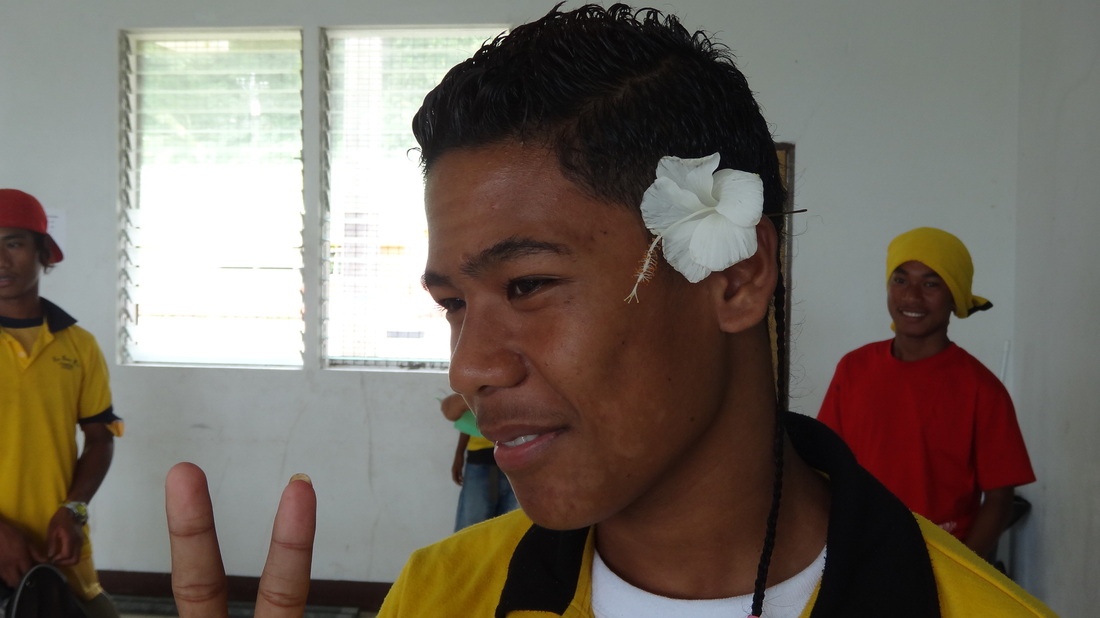 One of our students rocking the flower over the ear _-Every day on the road I see doors of moving cars open, whether passenger or driver (sometimes both at the same time!). The person then sticks his/her head out and spits a giant stream of red juice onto the road. These people are chewing betelnut – a local nut that is combined with lime and cigarettes. An extremely addictive habit, many locals are constantly chewing betelnut. As a result, the roads, parking lots and sidewalks are littered with red stains.
-The 100m world record will likely never be held by a Micronesian. The 100m while in flip flops world record, would most definitely be held by a Micronesian.
-You don’t go more than a couple hundred yards on any road in Pohnpei without seeing an animal. Literally, I’ve tested this. Most of the time its chickens, dogs and cats, but every now and then pigs, goats and ducks come out to play. 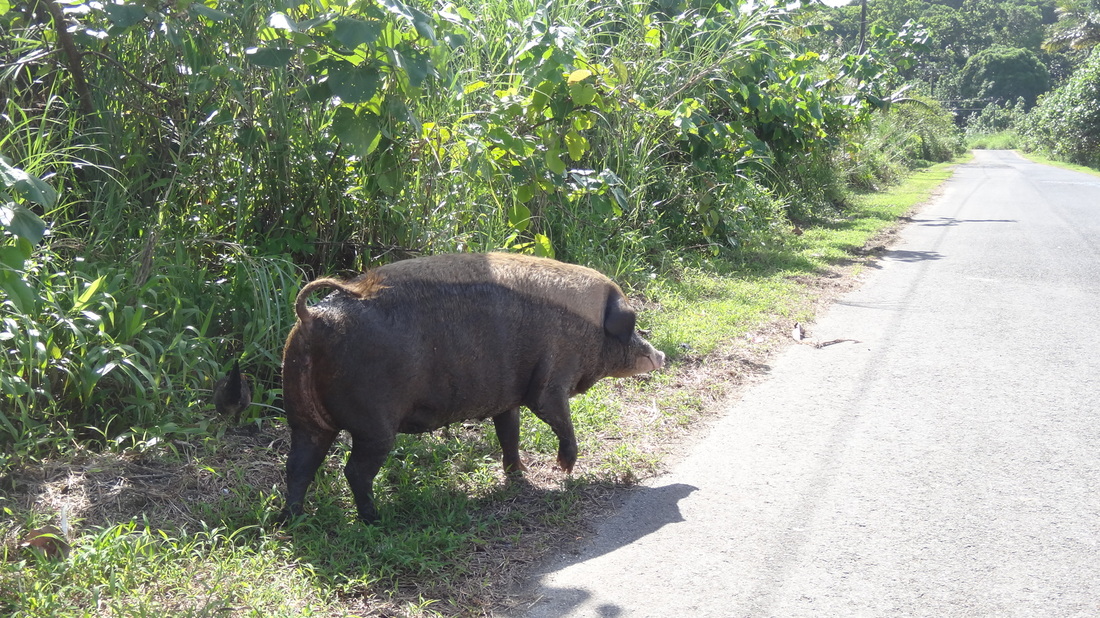 The most common animal found on the roads are dogs, but here's a rather large pig, along with a chicken in the brush to the left of the pig. _-Pohnpei has something that brings me back home to New Jersey – you can’t pump your own gas. The world really would be a better place with more Petroleum Distribution Engineers!
-When Micronesians get new appliances or electronics, they don’t take the plastic coverings off, ever. By keeping the plastic on a stove or printer for example, others think you have new things, which Micronesians find appealing.
-Why on earth many young Pohnpeians wear beanies is beyond me.
-While you drive on the right side of the road, cars are from both the US and Japan, so some cars have the steering wheel on the left, while others are on the right. I've driven cars with the steering wheel on the right and it takes a little bit of getting used to - everything is the opposite. I hope I didn't look too stupid when I put the windshield wipers on instead of the turn signal!
-Bob Barker would not be happy with this place.
-Many Pohnpeians have interpreted “backpack” to mean “chestpack,” wearing a backpack on the front instead of the back. It looks a little silly if you ask me.
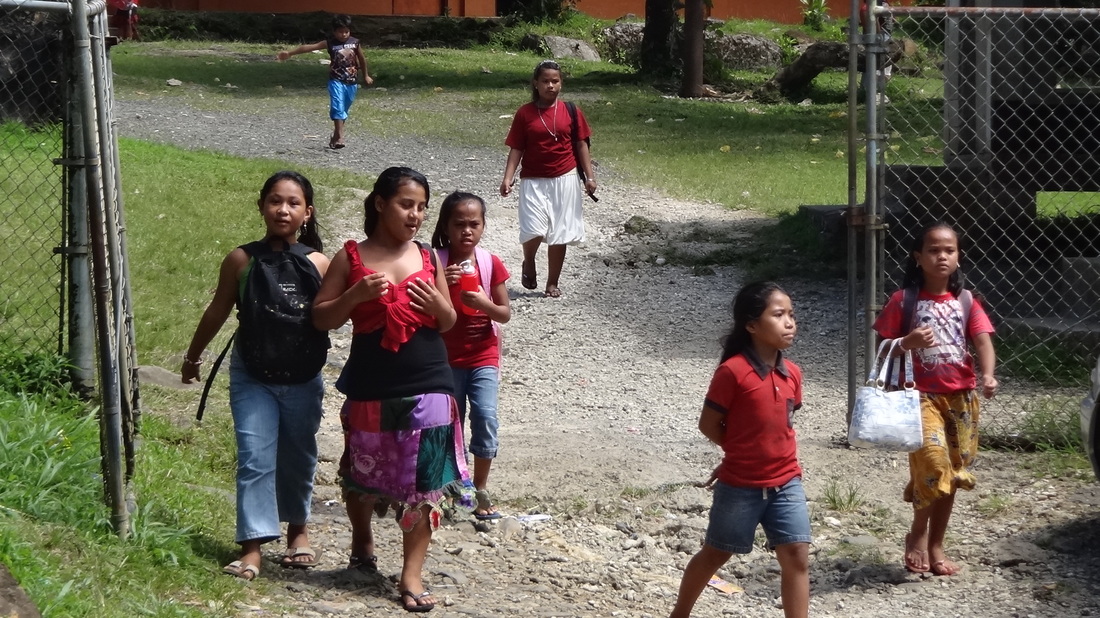 A girl rocking the chestpack on the left -Having to set the clock multiple times every day is just a normal part of Pohnpei life thanks to the frequent power outages.
-It’s not uncommon to come back to your car and people to be leaning or sitting on it. I always wondered what it would be like to bring some Micronesians to the US. If you’re caught leaning against someone’s car in the States you might get your head blown off.
-There is a high degree of copyright infringement here in Pohnpei. Here’s a short sample: Wall Mart, Cost Go, and South Park Hotel
-Despite being one of the rainiest places on earth, only on a handful of occasions have I ever seen a Pohnpeian carrying or using an umbrella. No matter how hard it’s raining there are always locals walking around like it’s a beautiful, sunny day.
-Speaking of rain, the phrase “when it rains, it pours” must have originated in Pohnpei. Hardly ever does it just drizzle in Pohnpei – most of the time it’s an absolute downpour.
-There's no limit to how many Pohnpeians can fit into the back of a pickup truck. It's hard to count when they drive by fast, but it's fair to say that I've seen pickups with at least ten people in the back.
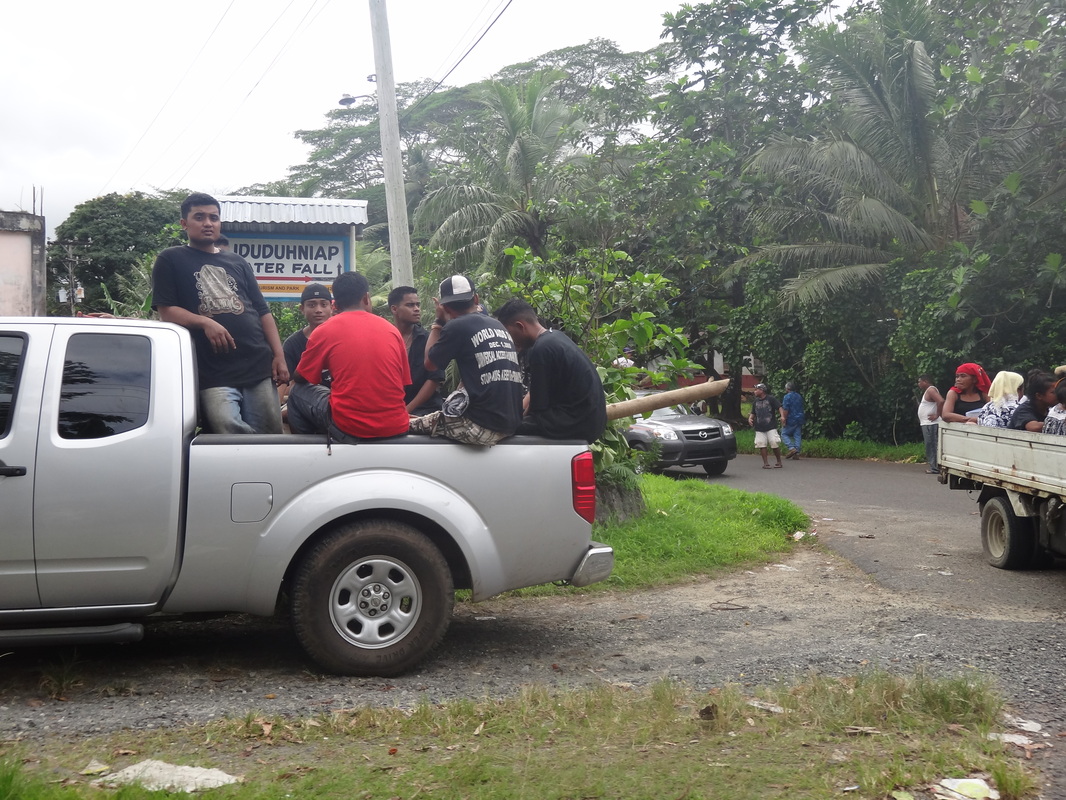 This is only a glimpse at how many people can fit in the back of a pickup. This truck has a big yam inside so that's taking up a lot of space. It's not fully shown, but the truck on the right is a more accurate representation of how many people can be squeezed into the small space. _-It’s not unusual to see two people walking down the street holding hands regardless of gender. If it is a male-female duo, they are not “together” – they are just friends or maybe brother/sister or cousins. The same goes for male-male or female-female. As a relatively conservative country it would be considered very inappropriate to publicly express solidarity in a homosexual relationship or even in a heterosexual relationship.
-Pohnpeian “billboards” aren’t exactly kid-friendly!
So there's my list. I'm sure if I stayed longer I would find new things to add to the list and I'm also sure there are plenty of other things those who have been in Pohnpei with me have noticed that I missed. But I hope this list gives you a slight taste of what makes Pohnpei such a crazy place - and I mean that in a good way! Below are some pictures that I have taken over the course of my service here that are just so incredibly random! I love walking out the door here and never knowing what I'm going to see. I'm going to miss that. Too much of the same is plain boring.
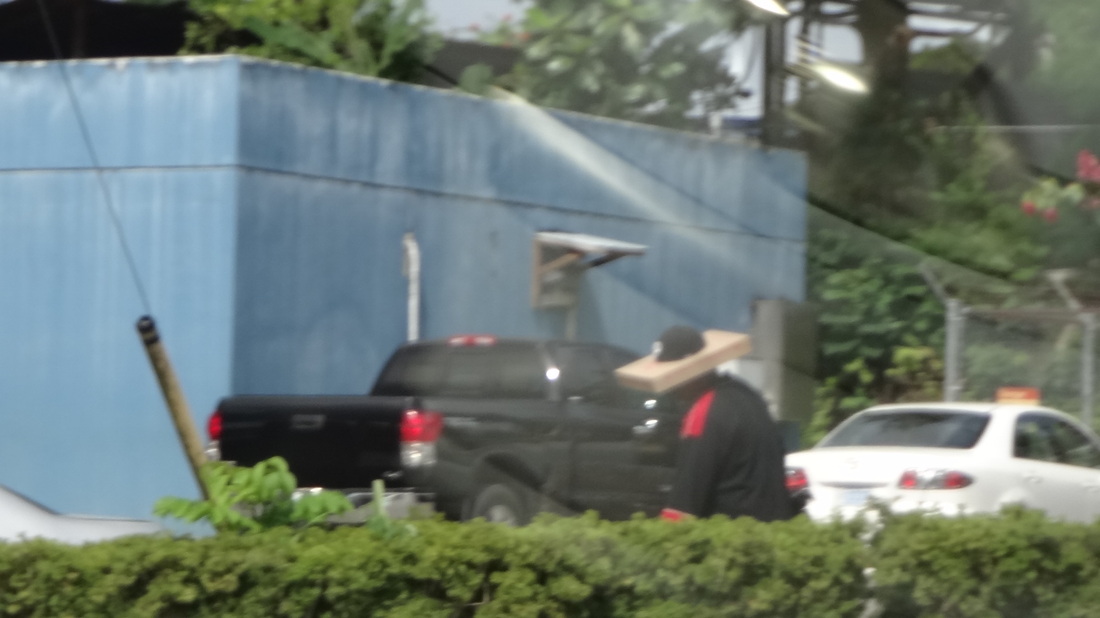 I call this the "Box Hat." This guy is trimming the bushes and found an innovative use for a pizza box to get some extra shade! 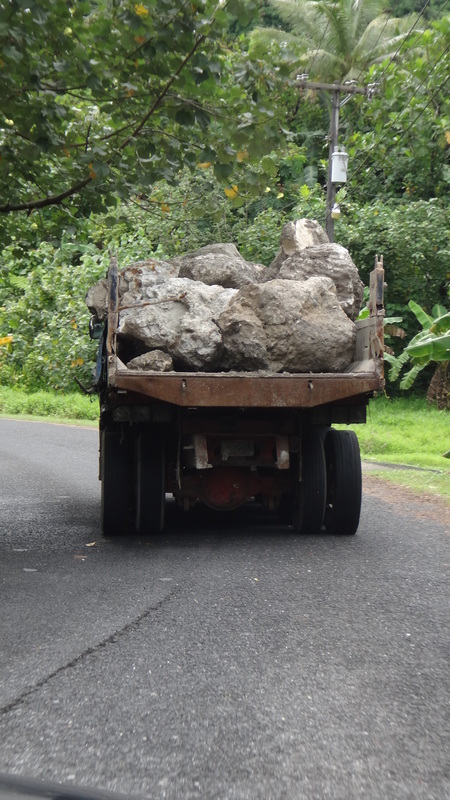 Mr. B and I were driving to Pohnlangas Elementary School and were stuck behind this truck for a good while. You can't tell from the picture, but a couple of those rocks were tipping whenever the truck hit a bump. This was just a little sketchy. If one of the rocks managed to roll out Mr. B and I would have been squashed. 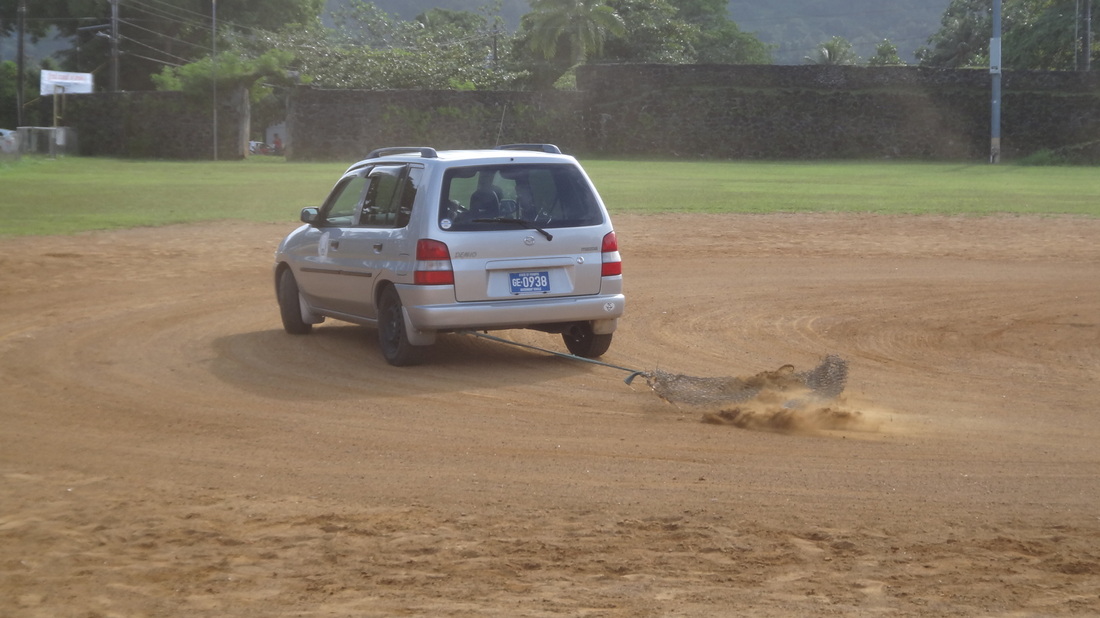 I LOVE this picture, and took it just the other day. I call this "Pohnpeian Groundskeeping." This is at the local softball field in downtown Kolonia. That is a government vehicle raking the field. Incredibly random, incredibly Pohnpeian! 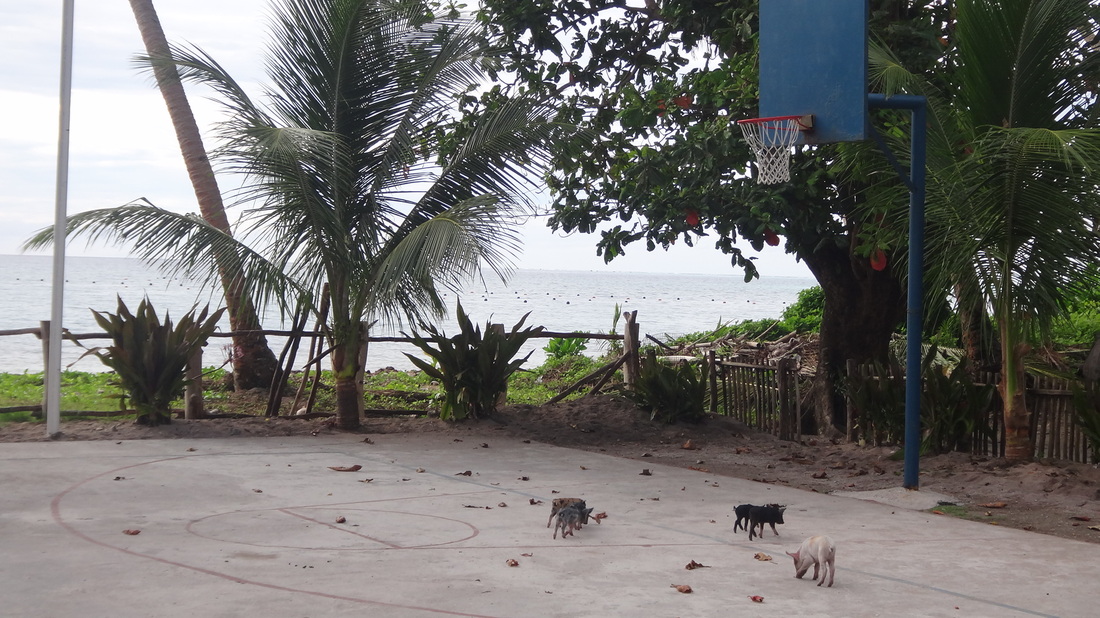 This is at Pakin, where I mentioned in my last post there are more pigs than people. Here are some piglets hanging out on the basketball court. This picture above says SO much. Here - read the story behind it.  Think you'd ever see this in the States? Here's a man outside a funeral walking with a leg of pig. An image that will forever remain in my head, that I failed to capture with my camera, is a ten-year old boy lugging a pig head on his shoulder. Crazy. 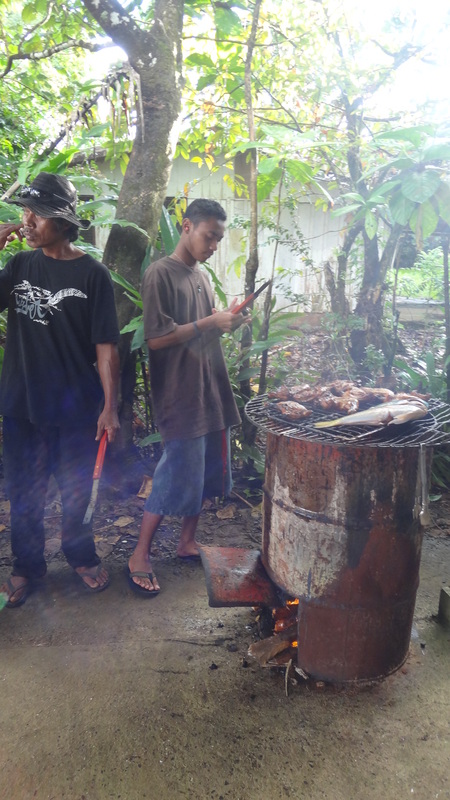 This is a Pohnpeian BBQ. It works very well. A cleaned-out 55 gallon drum with a little welding work to cut out a whole to feed the fire.  Colorful reef fish alongside chicken
It's hard to believe but I have less than a week left in Pohnpei. While I'm looking forward to seeing friends and family, I'm going to miss this place incredibly - in large part due to living in a place that is so unique, as evidenced by everything above. I'll leave the rest of these thoughts until my next post.
 Completed solar panel unit on Pakin Atoll __ This time last year I was graduating from college, reflecting on how much I had learned and grown over the previous four years. I was still hearing people say “Microwhat?” when introducing my plans for the future, but I was excited for my next adventure. A long summer later and I was in Pohnpei. It hasn’t really sunk in yet, but I only have a little over a week left in Pohnpei. While reality will soon smack me in the face, I have been reflecting again on how much I have learned and grown over the past year. In the midst of this reflection, I realized that in a way, I’m “graduating” from Pohnpei. Let me explain. When I first talked to John, the Executive Director of MAHI International, about volunteering in Pohnpei, I was first introduced to the solar project on Pakin Atoll, an outer island approximately 30 miles from Pohnpei. I researched grants and started fundraising for the project, excited at the prospect of transforming the life of the residents of Pakin, who have never lived with power on their island. While things changed and I shifted my focus to education here on Pohnpei, I was always excited at the prospect of contributing to this project in any way I could. I’m happy to report this past week we installed 16 solar panel units on the school roof in Pakin! This power will be used primarily for an ice machine and freezer which will revolutionize the economy of the island as the main source of income is fishing. There is a lot of extra power as well which is exciting as it might lead to future projects such as a computer lab for the school. On Pakin I also had the chance to help with health screenings of the islanders, assisting Ben, a doctor who is volunteering for MAHI International. There are about 60 people living on Pakin, a number which inflates during the summer months when high school students return from Pohnpei. We screened 40 adults and were able to educate them about many health issues about everything from quitting smoking to diabetes. Life on Pakin is a different world. One thing is for sure, most of my city friends wouldn’t be too comfortable. There are more pigs than people, no running water, and if you want to eat dinner it’s a plate of rice unless you get in the ocean and catch a fish. Many people see pictures of places this and wish they could live on a beautiful island paradise. While it is absolutely gorgeous many overlook how tough island life actually is. I have a tremendous amount of respect for these people on the outer islands and their incredible toughness. Once we got back from Pakin it was back to the grind. I was really excited for Friday morning when we had a meeting with an embassy here regarding a certain grant application. Back in December I wrote a grant to receive 16 iPads for our education program. We heard very positive feedback from this embassy after a long delay and re-writing the grant for 40 iPads, with the assistance of Ap, the Peace Corps volunteer on Pakin. We were a little worried however when they asked to meet regarding our application. We were able to get our hands on an iPad on island and showed them an application we plan to use and answered all their concerns. The grant was re-submitted with the very minor additions and the grant is all but set in stone (as it isn’t set in stone, I have not mentioned the embassy – once it is I will heap praise on their awesome nation!). When John, Ap, and I walked out of the meeting, it was then I started thinking about how I’m “graduating” from Pohnpei. We have worked tirelessly to receive these iPads and it’s becoming a reality! Any college student, past or present, can recall the intense satisfaction one feels after submitting all their work or finishing that last exam to finish a school year. I felt a similar feeling when we realized the iPads are actually coming – a long period (over a semester long this time!) of work, dedication, and persistence culminating in a moment of where we could revel in our achievement. These iPads aren’t the final answer – there is no silver bullet – but this tool will be an incredible addition to our education program. Speaking of graduation, this is our last week in the schools. While I’m sad to leave our students I’m very pleased with the progress made this year, especially amidst our limited resources. As I reflect on all that MAHI International has accomplished during my time here, I will be very proud of the solar project on Pakin and our acquisition of the iPads, but I will be most proud of our student’s increased English proficiency. I’ll let the graphs below speak for themselves. In the fun department throughout this past week, my roommate Ian and I were able to snorkel on the reef next to Pakin. No picture or video could capture the beauty of this place. You snorkel in water about five feet deep along the reef, then boom! – a drop down into the ocean so far you can’t see the bottom. The blue is the most vivid color I have ever seen and there are fish with the most vibrant and striking colors swimming everywhere. I felt like I was in an aquarium. I know what most mothers, including my own, are thinking at this point – where are the sharks?!? Yes, we stumbled across some. When there was just one shark, maybe four feet or so long, it caught our attention but we were more interested in observing it than feeling any sense of fear. When there was two of them we backed off a little bit, but continued about our merry snorkeling way. When the third shark showed up, this time maybe five feet, we stopped moving around and decided to stop diving down for the time being. Only a little bit later when the fourth and decidedly biggest shark arrived it was time to take a break and hang out on the reef! I might be willing to take some risks by entering shark infested waters, but I’m not crazy! This past weekend I was also able to visit Kepirohi Waterfall, which is likely the most breathtaking waterfall I’ve seen on Pohnpei just from the sheer size of it (pictures and video below!). While you can’t jump off it due to the lack of depth at the bottom, there is a place you can sit underneath the falls. It was incredibly loud but really fun to be on the other side of the tumbling water. It was also especially beautiful thanks to the 6.5” of rain we received in one day (5/18) a couple days prior. Just FYI – my next post I have been working on since the day I arrived on Pohnpei. You won’t want to miss it!
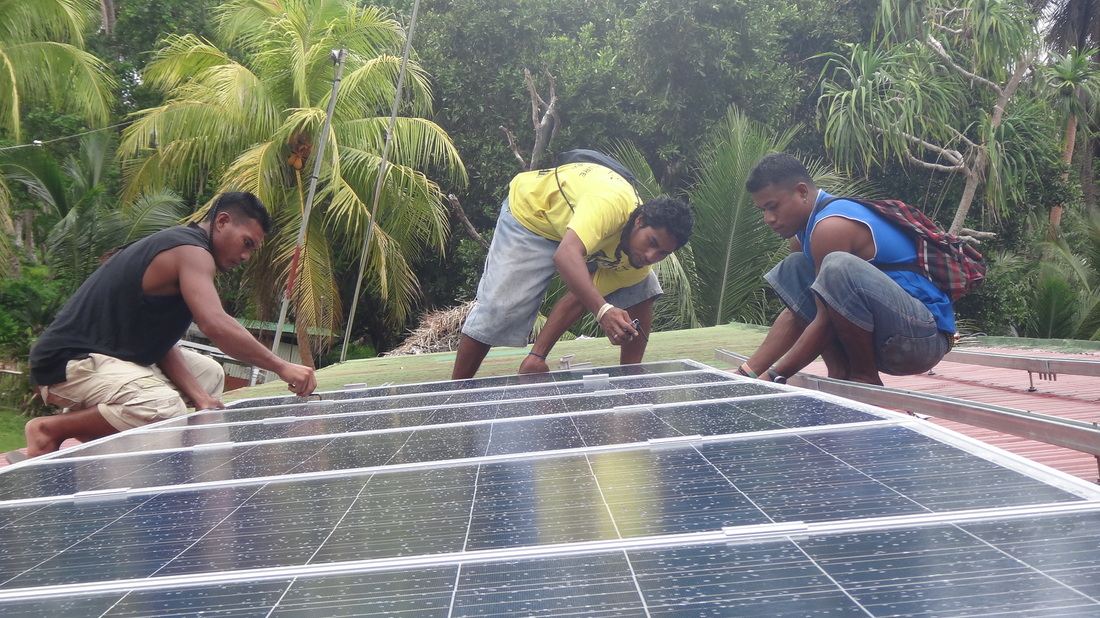 Locals helping install solar panels on Pakin Atoll  Pakin man with an epic beard looking out over the lagoon 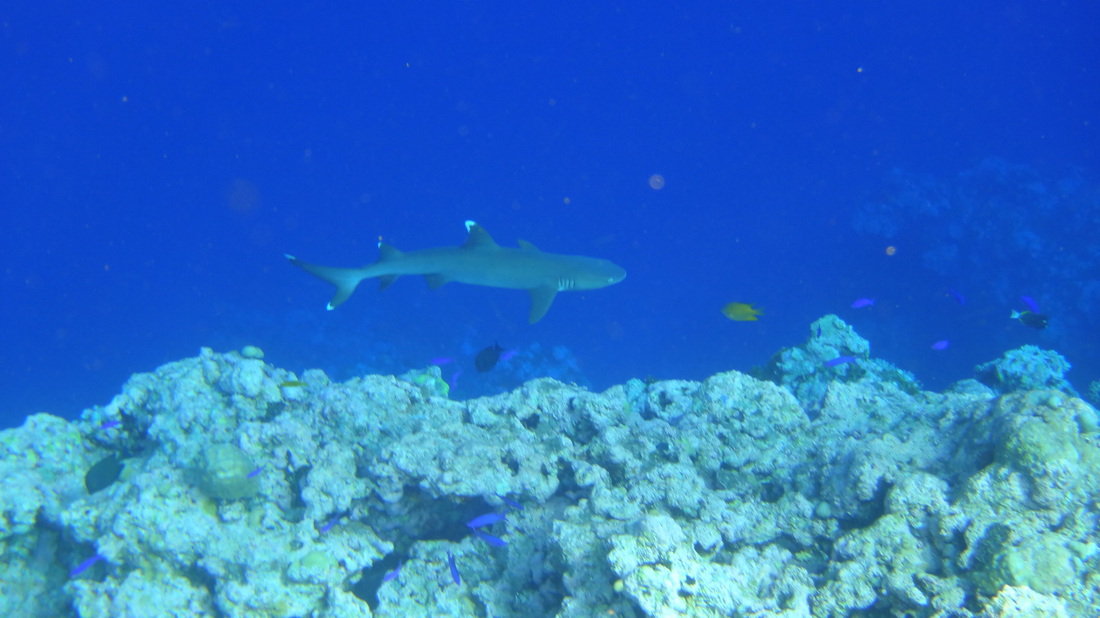 Hello there, friend 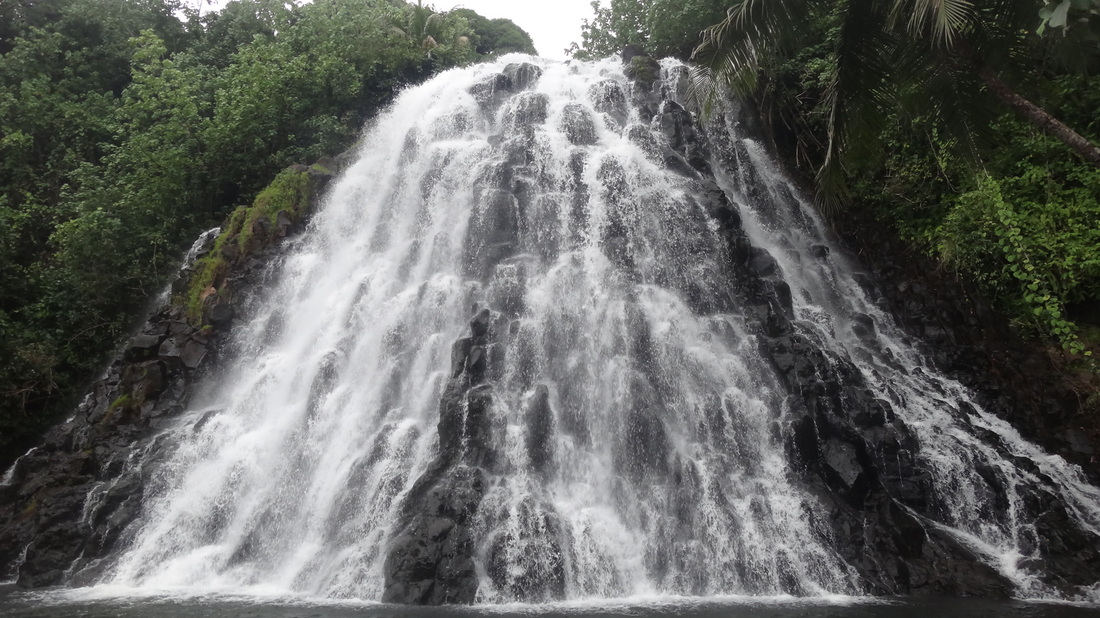 Picturesque Kepirohi (pronounced Kep-roy) Waterfall  Can you see me under there?
 My roommate Ian and I conducting student reading level assessments _ One of the many reasons I came to Pohnpei was to learn more about service. I wanted to learn what service is all about – what motivates people to serve, how to successfully serve others, and what role service should have in my life. While I still have plenty to learn, my time in Pohnpei has left an indelible mark on how I define service. I was introduced to service at a young age through scouting. In Boy Scouts I mostly did things like clean up roads and hiking trails and collect cans for food pantries. Throughout college I was too busy most of the time for service. I regret not making time for it, but I did have the opportunity to travel to New Orleans and work on building houses for a week over spring break my senior year. These experiences left me mostly confused about service. I knew that it was a “good” thing to do, and while I enjoyed helping others I felt that I really didn’t understand service. I can’t really put my finger on exactly why – I just knew I was missing something. This left a nagging feeling inside me. I had the inkling to work with MAHI International ever since I met my good friend Alex freshman year, who introduced me to the organization. After spending eight months in the “real world,” working at two internships in Washington, DC over my Junior year and ensuing summer, I knew that I wanted to delay entering the workforce for a year. I had been in conversations with John, the Executive Director of MAHI International, since my sophomore year and my inkling to serve turned into a commitment. Everyone has heard the extremely true cliché that you learn more by experiences than in a classroom. I knew that coming to serve here in Pohnpei would be a memorable and valuable learning experience. Boy, was I right! At first, serving here didn’t feel any different than normal work. I had a job to do and I strove to do it well like always. After about a month though, I really started to learn what service is all about. As I have detailed extensively throughout this blog, working in Pohnpei is not without obstacles (big understatement there). I found these never ending roadblocks were especially frustrating when serving. Our mission is to make a difference and to ultimately help the people. When your opportunity to succeed is impeded it’s frustrating no matter what the circumstance, but is especially so when you are investing your time, energy, resources and heart into a mission. While I found the roadblocks frustrating, what drove me most crazy was the overall lack of urgency rampant throughout the island. Many times I felt like I was running through quicksand. Throughout this learning experience I really looked up to those who have dedicated their life to serving here. I leaned on bits of wisdom, like “making things funny” from Mr. B and spent hours talking with John also trying to access all the wisdom he has accrued throughout his time here. One conversation in particular though sticks out and I will never forget. In early December Mr. B and I were eating lunch between our visits to the schools. We have spent a ton of time together in all our drives around the island and I have enjoyed immensely hearing all of his stories and learning from him. A little background – Mr. B has been involved in education on Pohnpei for 35+ years, with 19 of those years as the principal of the SDA School. Mr. B is also by far the most selfless person I have ever met. I really wanted to get at the heart of what drove him to work so hard when facing so many challenges in attempts to grasp how to cultivate servant leadership in others. His answer was deep, eloquent, and shockingly simple – you love. I don’t want to get all cheesy but this really hit home. Most people just talk about their work and accomplishments. You can talk a big game but at the end of the day it’s all just hot air. Mr. B on the other hand is a doer. There’s something beautiful about hearing pure and utter truth spoken by someone who not only speaks it, but has lived it every day his whole life and still does. I can’t think of a better way to learn about service than working side by side with people like Mr. B who embody service in every sense of the word. So what is service all about? It’s about love. People who are truly motivated by loving others are the ones who make a difference as they are armed with the strength to overcome any obstacle. I can’t write about this without mentioning where this love comes from. MAHI International is a “Christian-driven” organization. Our work isn’t about evangelizing, but after spending so much time with the people who make up MAHI, it is crystal clear that our collective inspiration is coming from something greater than ourselves. While no one here is Jesus, it has been awesome to be around people so impacted by their faith and knowing Christ in their heart that Jesus seeps through them. After I leave these islands I intend to continue serving. Sure, this will mean doing typical “service” things like volunteer work. After spending so long engulfed in service though, I hope to have opportunities to serve others every day through my daily interactions. While my time in these islands is coming to an end, everything I have learned, including the lifestyle of service I have adopted, will continue to guide me for the rest of my life. All that said, my time here is not over! This past week we were in the schools conducting student reading assessments in attempts to see their progress since we first assessed them in October and November. The results are not complete yet, but I’m happy to report that overall we have seen major progress! Also, I’m very excited that this coming week I’m going to the outer island of Pakin for a few days. Just for a point of reference, Pakin is about a two-hour boat ride from Pohnpei if the weather is good. The main mission is to install solar panels, but I’m also going to be helping with health screenings and teaching in the small school there. Life on the outer islands is a completely different world so I’m excited for the cultural experience. In the fun department, this past Thursday was FSM Constitutional day, so my roommate Stephane and I took the holiday to hike Sokehs Rock (the big rock in the banner on the top of this page) and camp there. It’s always a spectacular view up there and the sunset, night sky, and sunrise were well worth the trip. We were very fortunate to have a clear night – the horizon was so clear it was hard to distinguish the flashing lights of boats on the water from the stars in the sky. It was also nice we didn’t get rained on! A few pictures are posted below!
 My favorite picture from Pohnpei so far - Mr. B and I standing in front of "the Green Machine" - i.e. the education program's car, used to take us from school to school 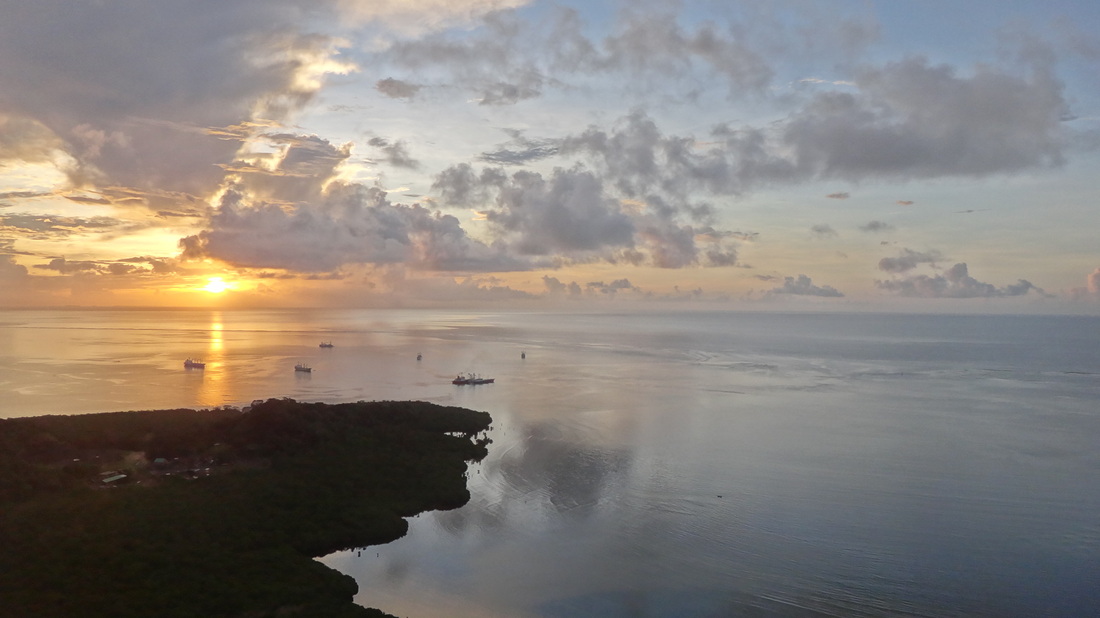 Sunset from atop Sokehs Rock  Good morning, Pohnpei International Airport!
 Students working on grammar worksheets at ESDM Elementary School _ It’s hard to believe, but we are winding up our education program for this school year. In the past few weeks we have focused on the 8th graders as they have their big high school entrance exam this coming Friday. We will spend another week working with our 6th and 7th graders before calling it a year. History shows that once you get to mid-May the schools here are pretty much checked out, infatuated with practicing for graduation ceremonies which are a huge deal. Picture the scene – spending weeks preparing for a ceremony to celebrate the accomplishments of graduating 8th graders – when many of them are reading at a 3rd grade level or below. Frustrate you a bit? Remember – if you don’t make things funny, you will get a heart attack. As we are approaching the end of our program this school year we have been reflecting on what went right, and what we want to do differently in the future. I’ll address the latter first. Originally, MAHI International planned to only have one or two schools in our program, focusing on truly making a difference there. When we brought our plan to the Department of Education last August, they implored us to take on seven schools, all of which were among the poorest performing and had new principals. After two months we dropped two schools due to a lack of support on their part for our program. When we gave our initial report on the state of the schools and the lackluster (to put it mildly) reading level amongst the students, we received negative feedback for dropping the two schools. The logic was “adding is positive and subtracting is negative.” We tried explaining how all we had was Mr. B, myself, a car, and a modest budget for fuel and copies. As a result, we argued it would be best for us to concentrate our resources to make a deeper impact. Some understood, some did not. About a month and a half ago, we dropped another one of our schools after a consistent lack of support. More than once we rolled up to the school and found no students there, and once we were in the middle of teaching and they rung the bell ending school for the day. Why? The principal had to go to class in the afternoon and the faculty meeting had to happen at 11:00. Here’s the logic – cancel school for 300+ students for the day, so one man can go to class later. Deep breaths now. Remember – make things funny. Believe it or not, that wasn’t the final straw. The school really needs our help so we kept trying, but after continued indifference from the school we had to sever ties. So here we are at four schools, all of which are spread across Pohnpei. While there is significant travel time (our farthest school is about a 75 minute drive through pothole ridden roads), we believe it is important to serve schools far away from Kolonia, as the Kolonia schools are the best and receive the most support. Even now however we are still having trouble with many of our school administrators and teachers not supporting the program. We have come to the conclusion that next year we will focus on two schools, and perhaps only one – choosing schools with principals who wholeheartedly support our program and teachers who see our instruction as an opportunity to learn new material and teaching techniques and not a 30-minute break. Beyond narrowing down our number of schools next year, we are excited at the prospect of receiving 40 iPads to use in the classroom. You might remember our original plan to bring iPads to use in the classroom this year. Without going into the details we applied for a grant to a very receptive organization back in December, and like everything in island life, have waited a long time. Long story short, the prospects are very bright that we will receive the iPads and three protective cases for them shortly! It’s obviously disappointing we weren’t able to use them in the schools this year but we can only move forward now. While I might not be here to witness it, I’m super excited to see pictures of our students with iPads in their hands! As I approach my last month on Pohnpei, I have been reflecting on all the work MAHI International has done as an organization around our education program this year – all the copies made, all the trips Mr. B and I took around the island, all the hours we spent imploring our students to speak in English, and yes, all the hairs we have collectively pulled out of our heads in frustration. I am now forced to ask the question – have we really made a difference? This is a tough question. I’m first forced to look at this analytically – what educational gains have our students made? I can unequivocally state that our program has resulted in widespread gains amongst our students. When we first asked students to write a complete sentence, the majority were dumbfounded. The idea of capitalizing the first letter in every sentence and ending it with a period was completely foreign. We then worked our way to the difference between proper nouns and common nouns, then present tense and past tense, and on and on. We still see sentences starting without a capitalized letter, and “cuz” instead of “because,” but they are now the exception, not the norm. Besides their writing, overall their reading comprehension has significantly progressed, along with their vocabulary and phonics skills. So analytically, the answer is yes, we have made a difference. But part of me wants to look deeper. It’s great that their English is better than it was a few months ago but there are still so many problems and so much room for progress. The question still stands – did we really make a difference? I was talking to my friend Ap a couple days ago, a tremendous Peace Corps volunteer serving on the outer island of Pakin. You might remember very early on in my fundraising last year I was raising money to put solar panels on Pakin. More on the progress of that project in the next post or two. Ap is a teacher at the school there and we got to talking about the progress our students have made. He said something I found very profound, and holds a lot of truth – at the end of the day, education is about faith. You have to believe in something that you can’t see – even if there doesn’t appear to be progress, education is a marathon, not a sprint. Mr. B joined us and reflected on his career in education. Thousands of students passed through his classroom and under his leadership as principal. He explained how he sees his students prospering all over Pohnpei, working in great jobs. He might not have been able to see his influence on graduation day (no matter how lavish the Pohnpeians made the ceremony), but he can undoubtedly see it now. (Although he would be much too humble to acknowledge he did anything extraordinary). Education isn’t like a business where there are indisputable, unambiguous numbers which reveal a company’s level of success. Sure, you can show an increase in test results, higher graduation rates and send more students to college. All of these are measurements of success which hold some validity. Ultimately however, the true impact of education extends far beyond numbers on a page. By entering these classrooms, exposing them to more English and encouraging them to read, work hard and aim higher, I believe we have truly made a difference. I gotta have faith in that.
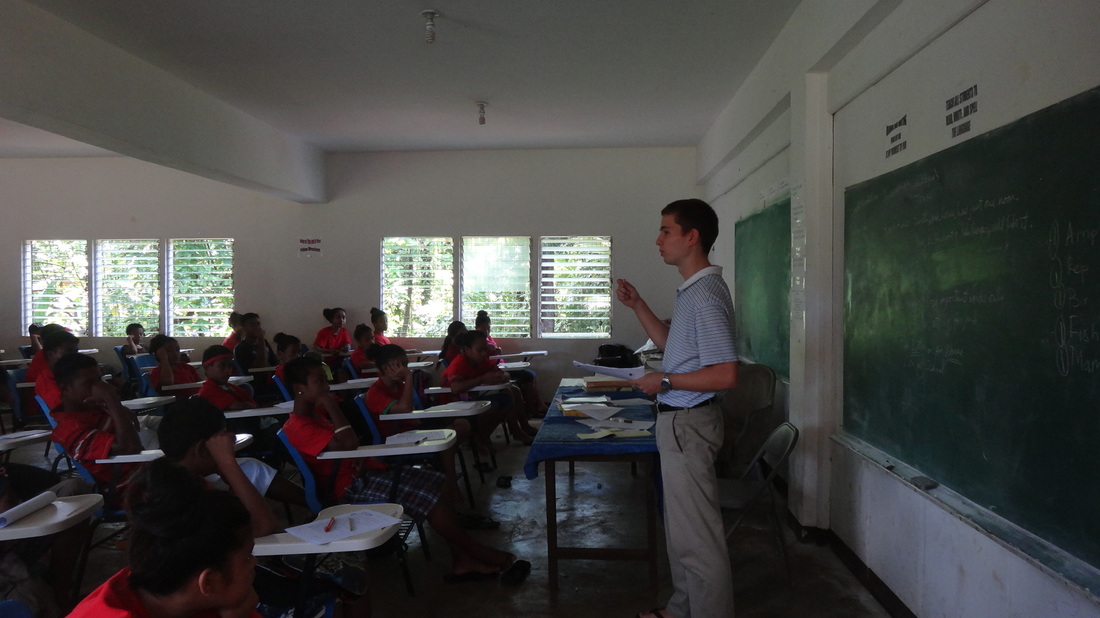
Teaching 8th Grade at Pohnlangas Elementary School
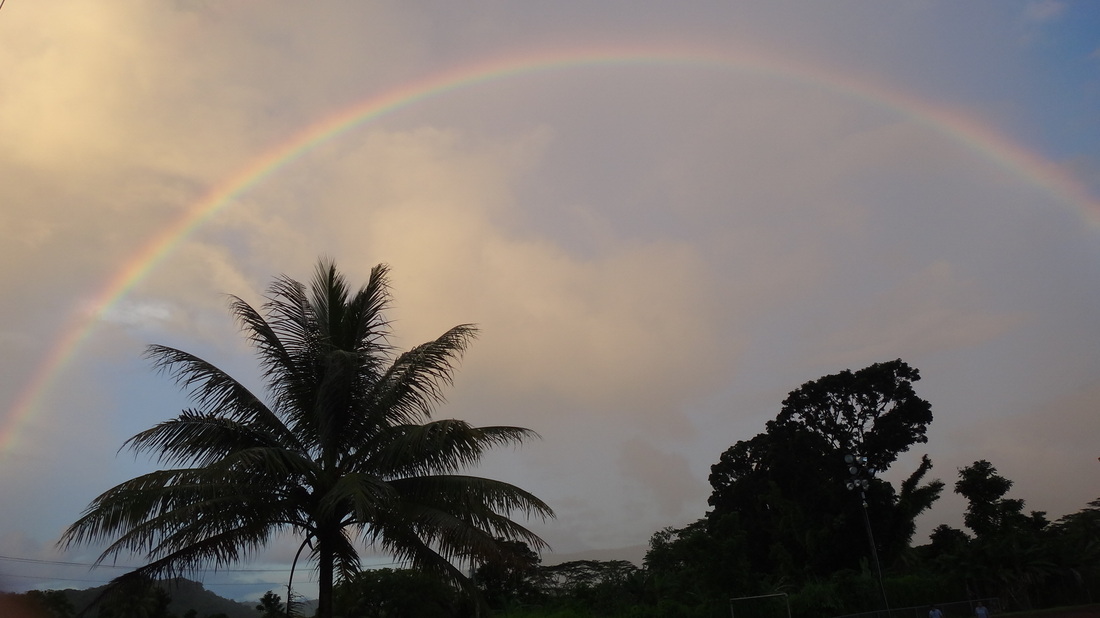
Recent Pohnpeian rainbow
 Stephen and I in a Japanese pillbox, deep in the jungle on Sokehs Ridge _ For history buffs like myself, Pohnpei presents many hidden wonders from the past. The first of these that comes to mind is Nan Madol, without a doubt Pohnpei’s most famous landmark. Growing up watching the History Channel and reading books, one of my favorite time periods has always been World War II. Before I came I did a little research to see exactly what Pohnpei’s involvement was in the Pacific theater. I was slightly disappointed when I learned that there were no shots fired on Pohnpei. However, the Japanese did occupy the island and it was bombed significantly before the Japanese abandoned it. The FSM though did play a significant role in the war. Chuuk, the state closest to the West of Pohnpei, held a very important harbor for the Japanese. The devastation was so great when the Allied Forces attacked in February 1944 as part of Operation Hailstone, it was called the Japanese Pearl Harbor. Chuuk is known for its great scuba diving of Japanese wrecks. Back on Pohnpei, there have been no battlefields to explore, but there are some very cool remnants of the Japanese occupation. Some of these remnants are more easily found than others. In downtown Kolonia, the budding metropolis that it is, there is an old Japanese tank right by the post office. I have gotten so used to seeing the old, moss covered weapon of terror that I had to take a picture of it offline rather than take one myself.
_ I was talking with my supervisor John a few months ago about World War II on Pohnpei and he mentioned I should go into the offices at the local hardware store to see their old Japanese artifacts. There, a few feet away from hammers and measuring tape was a display of Japanese swords, helmets, guns, and artillery. It was really cool to see so many cool relics and strange to see them in such an obscure place.
 A Japanese machine gun in Ace Hardware - go figure _ What’s more fun though is going on treks to find other remnants of the Japanese occupation, deep in the jungle. One of my first weekends here, I was able to see a few old Japanese anti-aircraft guns on top of Sokehs Ridge, along with a fully restored Japanese tank. This past weekend, my new roommate Stephen (who is working in the Emergency Medical Service program) and I went up to see the guns. John though told us about a pill box that was off the beaten path. We hiked around the jungle for a little bit, eventually finding trenches that we thought would lead us to the pillbox. We later learned that these trenches are caved-in tunnels. Eventually, we stumbled upon this entry way into what appeared to be a man-made cave. While it’s not the scariest thing walking into a cave with a dimly lit headlamp, having no idea what’s inside, I do admit it was a little bit sketchy. The video below shows us going into the cave and my boyhood joy of finding the pillbox!
_ While the American military never occupied Pohnpei during WWII, it still left some major reminders of the past conflict. Many times throughout our hikes in the jungle, particularly when hiking closer to the shore such as on Sokehs Ridge, it is easy to stumble upon old bomb craters. These craters range in size from five feet across to twenty-five feet across and are certainly a sight to be seen. The Japanese left more behind than tanks and guns. Their time on the island left an indelible mark on the culture that can still be seen today. The first thing that comes to mind is how locals often bow their head down as a sign of respect. After being on island for so long I find myself doing this as well. In regards to diet, don’t quote me on this but I suspect that it was the Japanese who brought rice to Pohnpei, which is now a staple for almost every meal. While the Japanese left a lasting influence on Pohnpei, there is no doubt this influence is fading. I often hear Mr. B talk about how many of the people who were around during the Japanese time wish they were under Japanese rule again. The Japanese were known for their harsh treatment of local people on islands they conquered and disciplining those they viewed as “below them” with a swift and heavy hand. While perhaps the Pohnpeians didn’t have as much freedom as they do now, they certainly were run more efficiently. Case in point: Occasionally when my students get rowdy I remind them they should be glad they are no longer under Japanese rule. When they occupied Pohnpei, locals only went to grammar school for approximately two-three years. The cream of the crop went to a trade school while the rest were left on their own. Despite only being in school for a few years every student became proficient in Japanese. Fast forward 70 some years and students are in school for twelve+ years and hardly ever become proficient in English. How can this be? The answer likely won’t surprise you – the Japanese were extremely strict, and failure to behave or learn meant punishment, often physical punishment. So when my students are going crazy I remind them to be thankful, and say their motivation to succeed has to come from within! I have only mentioned a small amount of WWII history on Pohnpei, but I hope this gives you a brief glimpse! Besides searching for old WWII relics, the past two weekends have involved trips to my favorite waterfall, Lehn Paipohn (see video below of recent jump!) and two new waterfalls today, Sawartik & Sawarlap, which means “Little Brother & Big Brother” in Pohnpeian. Sawarlap is one of the tallest waterfalls on Pohnpei, see pictures and video below! 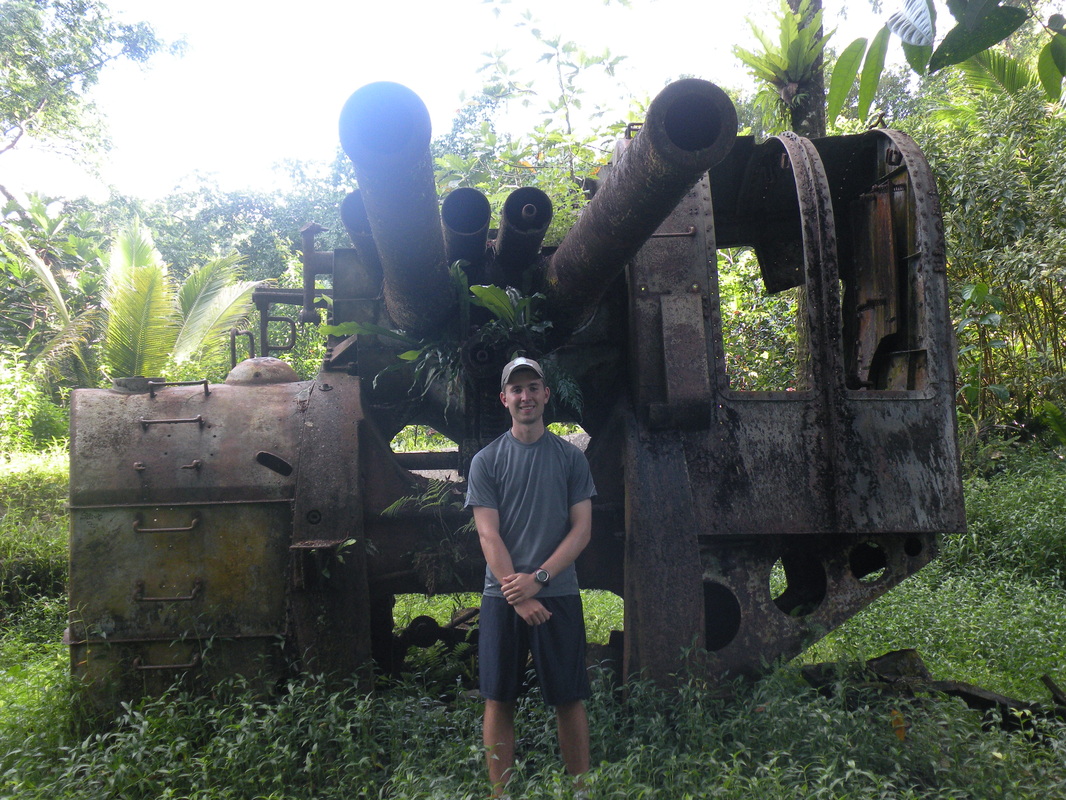 Picture of myself with an anti-aircraft gun atop Sokehs Ridge in January 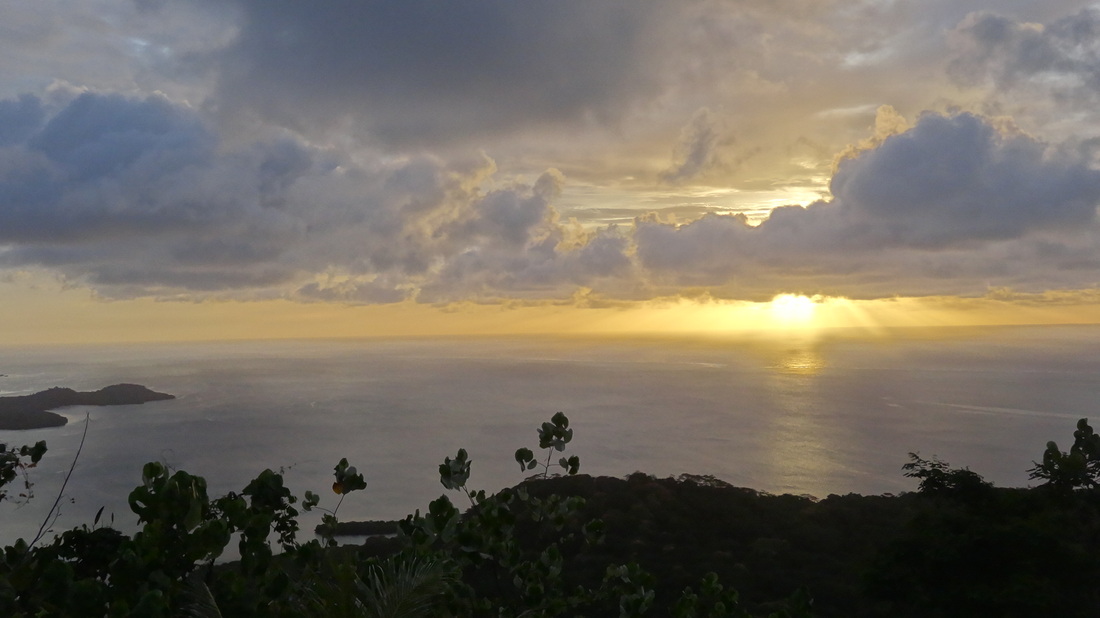 Recent sunset from atop Sokehs Ridge  Sawarlap Waterfall, one of the tallest waterfalls in Pohnpei
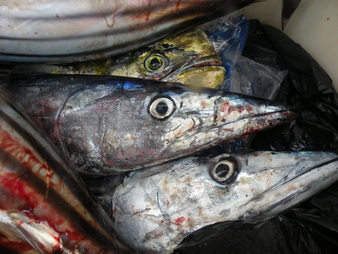 _
One of my favorite activities during my time in Micronesia has been fishing. I have been fortunate to be surrounded by individuals who love fishing more than I thought was humanly possible. My previous fishing experience consisted of the typical cast and reel at lakes. The fishing I found here is in a completely different ballpark. I have taken part of three different types of fishing. They are:
Trolling
This is the most common type of fishing for non-commercial fishermen. While some have high-tech rods for trolling, the standard is using a hand line. Lines are wrapped around buoys which have been carved into an hourglass shape.
How It’s Done:
To find the fish, you look for groups of birds. Once a group has been spotted, it’s pretty simple – you let the line out the distance you want, with the hook and lure at the end, and hold onto the other end. Usually you face the back of the boat with the line wrapped around your hand closest to the inside of the boat and the outer hand holding the line, feeling for pressure. What happens if you catch a monster fish? You hold on! When we are trolling for bigger fish and have the larger hooks on I tend to push my feet up against the ribs of the boat so I don’t fly overboard in case I hook a monster.
Dangers:
The most obvious danger is being thrown overboard after hooking a gigantic fish. Drowning is possible if the line gets stuck around your hand and the fish dives. While this might be the most dramatic danger, what happens more often is the boat’s engine dying in the open ocean. With strong currents, a boat can be taken hundreds of miles. Mr. B told me how his cousin and two friends drifted all the way to the Marshall Islands for 24 days, surviving on one coconut and tiny creatures growing on driftwood. This past weekend, one of the groups of people going to camp on Ahnd Atoll were extremely lucky when the engine died in the channel instead of in the open ocean. They still might be drifting! Truly, the ocean is a beast and shows no mercy. You really have no idea what can happen out there.
Pros:
You catch the biggest fish this way and if you follow a school of fish around you can catch boatloads of fish - literally.
Cons:
It uses the most gas and if you can’t find birds or the fish aren’t biting it’s a real bummer.
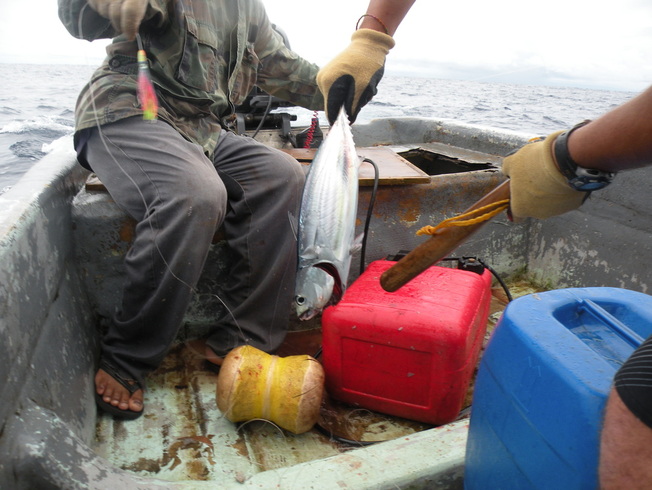 Most fish, save Mahi Mahi which are pierced through the brain with a knife, are killed with a good whack to the head. Here, you can see the buoy wrapped with line _ Bottom Fishing
This type of fishing is almost always done inside the reef.
How It’s Done:
Here instead of lures you use bait (Skipjack tuna is the best bait), and weight your line to the bottom. Back in October, Sheldon, a Kapinga man (from the island Kapingamarangi, an outer island of Pohnpei State), taught us drop stone fishing. This is how it works: you put bait (skipjack) on a hook, put the hook on a piece of cardboard, (a little bigger than palm size) fill it with chum, fold the cardboard over, wrap the line and cardboard around a rock and tie a special knot. You throw the whole package overboard and when it reaches how many fathoms you want it to go you pull up real fast. It releases the rock and chum, while the hook lingers. Lots of snafus happen as you can imagine, but if fish are biting it works very well.
Dangers:
This is easily the safest of the three types of fishing here. I suppose you could still get your hand stuck in the line and be thrown overboard but I have never heard of that happening. Most of the dangers of the ocean are avoided by staying inside the reef.
Pros:
It doesn’t cost as much gas and if you find a good spot where the fish are biting, you can be pulling for hours.
Cons:
Most of the best fish (in my opinion: Wahoo and Mahi Mahi) are found outside the reef. It also can get pretty boring if the fish aren’t biting and you’re just sitting there. It’s also worth mentioning that those who get sea sick are much more likely to get sick sitting on a stationary boat rather than trolling around in the ocean.
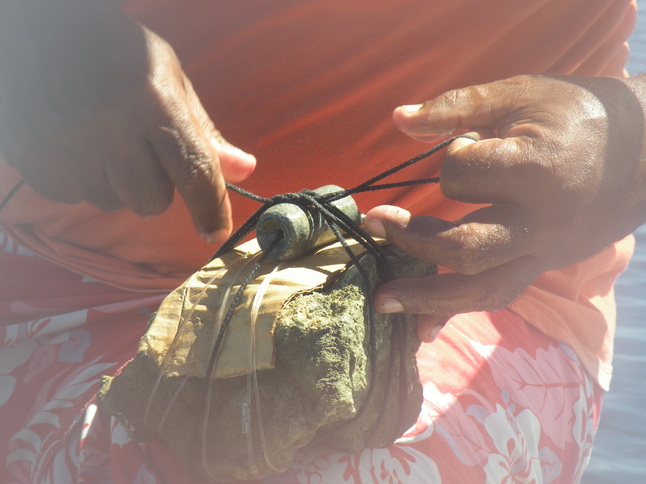 Sheldon tying a knot during drop stone fishing -- this led to a 40 lb. Yellowfin Tuna! _ Spear Fishing
Out of these three types of fishing, this one might be the most difficult and have the most variables.
How It’s Done:
There’s not too much to it – you find a reef, jump in the water with your spear, find a fish, and try to spear it. The spears are three metal prongs at one end, a long, skinny, plastic tube, and a circle of rubber at the other end. You place the rubber between your thumb and pull up on the rubber on the pole as far as you can, letting go when you attempt to spear a fish. It’s possible to spear fish in the day but it is very difficult as the fish see you and are very fast. The best time to spear fish is at night with a new moon – the moon is so bright here many fish stay awake, thinking it’s still day time when there's a full moon. With a flashlight in one hand and a spear in the other, you hover over the fish, not shining the light directly on it, then shine the light and spear in one fluid motion. It takes a good deal of practice to become a successful spear fisherman.
Dangers:
Being actually in the water presents natural risks, especially at night. For those who love Shark Week, yes there are sharks. But they don’t want to eat you, they want your fish. Many times they stalk you, waiting to eat your catch. Sharks really are lazy creatures and I hate them for it! When spear fishing, many people stick a rope through the gills of the fish, and hold the fish out on a line while they continue to fish instead of swimming to the boat and throwing the fish in there. Obviously it’s not the best idea to swim around with bloody fish attached to you. Almost every shark “attack” spear fishing story I’ve heard has been sharks trying to eat fish attached to one of these lines and accidentally getting a bite of the fisherman. Beyond sharks, there’s other dangers such as strong currents and fishermen getting stuck in coral and drowning trying to find fish hiding there. It’s also worth mentioning getting speared by other fishermen, though thankfully I haven’t witnessed that!
Pros:
It’s fun to swim around in the ocean and see with your eyes which fish you want to eat, rather than waiting for a bite on a line.
Cons:
While sharks just want your fish, it still is pretty sketchy to be stalked by sharks – especially at night when you can’t see them. Also, unless you find a really good reef the total catch isn’t usually as high as trolling or bottom fishing.
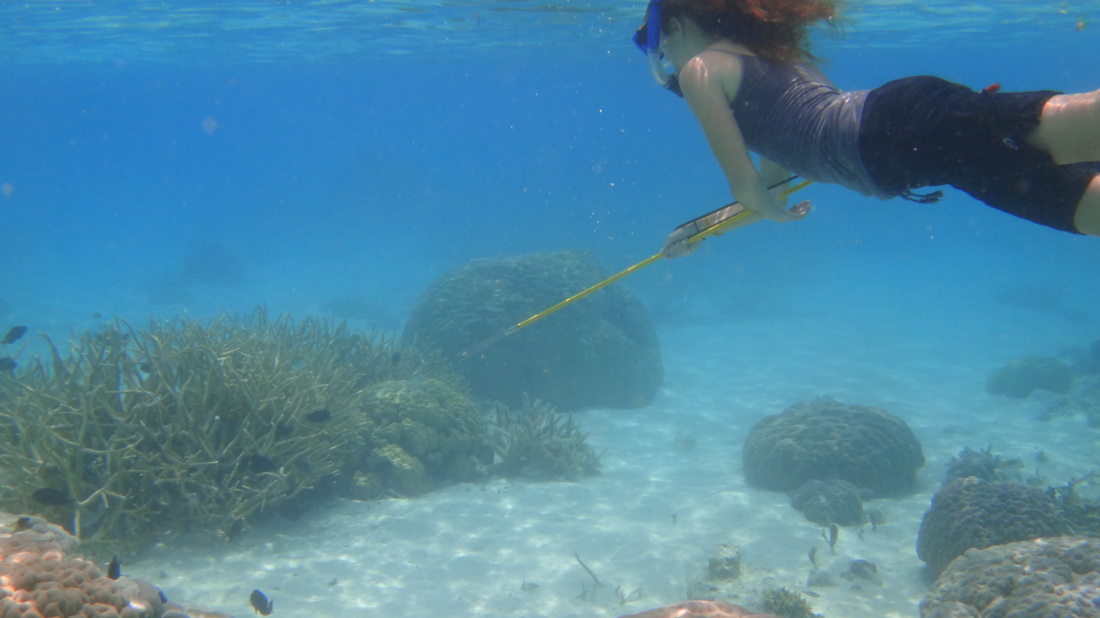 Kelsey going after some fish this past weekend at Ahnd Atoll I couldn’t write a post about fishing in Pohnpei without talking about how these waters are being drastically exploited. Mr. B, an avid fisherman who has been fishing the Pohnpeian waters for over 50 years, provides excellent testimony to how much has changed. I strongly suspect there has been an incredible amount of backroom deals between officials from the FSM and foreign countries, allowing these waters to be over fished. The use of nets has been disastrous as the net catches everything in the ocean – and what isn’t wanted is thrown overboard, dead. Even John in his twelve years here has seen a drop in the number of fish. Mr. B used to go trolling and always catch a 50+ lb. Yellowfin Tuna – now that happens maybe a few times a year.
Overall fishing is really fun though it’s not for the faint of heart. After a day full of salt and sun, I’m always thankful to arrive on land and not have to go out the next day. Besides the fun, it’s worth the effort every time when it leads to fish taco night!
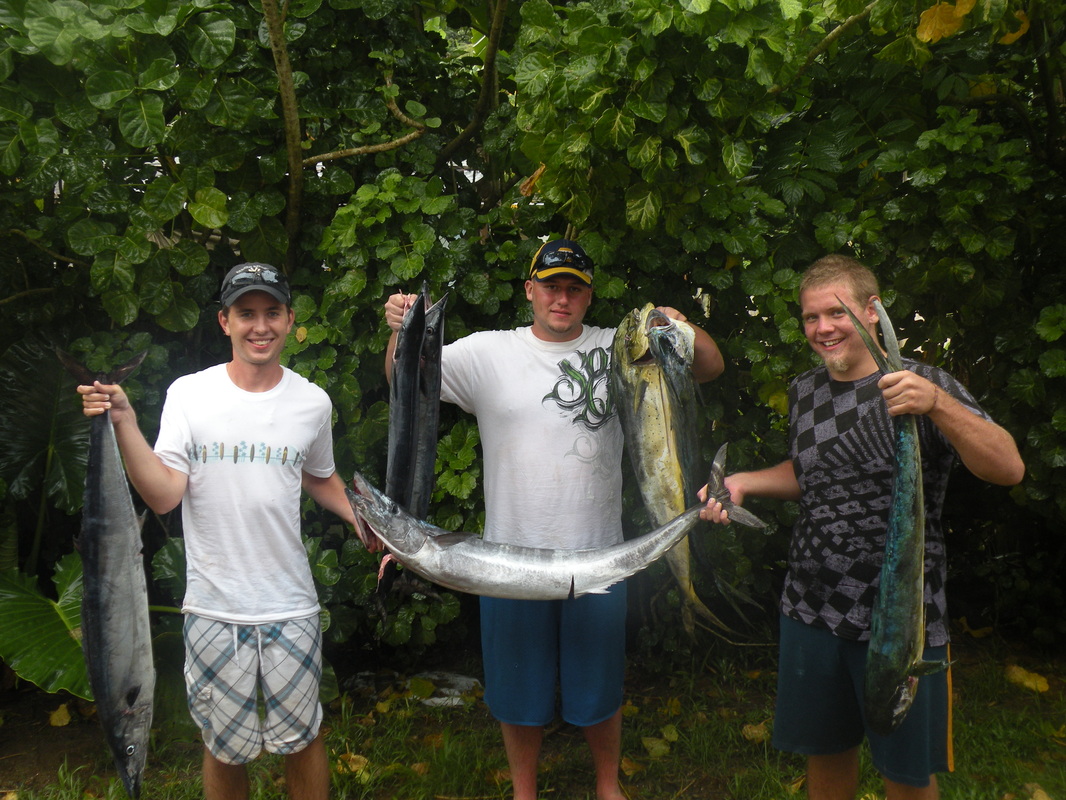 My best fishing weekend was back in December when we caught plenty of Wahoo and Mahi Mahi!  As I said, I hate sharks. One fishing trip last month, we didn't catch anything all day, save one stinky Barracuda, when we hooked this easily 20 lb. Yellowfin. Then, a stupid shark ate our dinner because he was too lazy to catch his own! All he left us was this head.  I will eventually post recent pictures to the Flickr account, but here's one of my best shots from this weekend camping at Ahnd Atoll
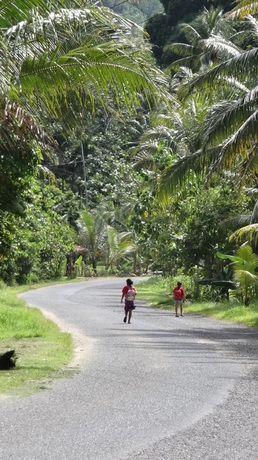 Throughout my time on Pohnpei I have witnessed a constant dynamic among the local people. While the western influence has pervaded into almost every aspect of society there are still elements of the original Pohnpeian culture. As I have mentioned before, many of these elements have been perverted by the western influence. A great example of this is sakau. Previously, sakau was a ceremonial drink that was only drank by the high traditional leaders on very special occasions. Now it is drank by over 70% of the islanders daily. This constant dynamic I speak of is how the islanders are “stuck in between.” They are Pohnpeians, which holds its own traditions and customs, but also have the western culture and its accompanying expectations forced upon them. How does one strike a balance between these two cultures? How do young Pohnpeians form their identity amidst all the confusion? There aren’t any easy answers to these questions and the lack of answers often leads to fatal consequences. Suicide rates in Micronesia, particularly for young adult males, are among the highest in the world. Even during my six months here, I have heard several tragic stories of young people taking their lives. This problem is far more complex than I could ever address in a short blog article. It’s worth noting though that suicide is a major issue in areas where the original culture has been taken away or perverted. Look no further than Native American reservations. In many ways, Micronesians are facing the same issues as the Native Americans – both struggle with alcoholism, drug abuse, suicide, unemployment and many other issues. While there are numerous factors that contribute to all the issues facing these indigenous people who have lost their culture, I believe that one of the largest causes is the loss of community. It’s a well-known fact that the modern western culture champions an individualistic narrative, while community is tossed to the side. In my opinion this is a troubling issue for all people, but is especially so for individuals whose entire culture revolves around the community. We really shouldn’t be surprised at these horrific consequences given what these people have been through. As I have mentioned before, I believe the easiest way to “fix” Pohnpei would be to shut down the airport and stop all the ships from carrying in cargo from the outside world. Pohnpei would be forced to go back to its original culture and while the transition would be tumultuous at times, I believe many of the issues facing Pohnpei today would slowly diminish until they were eliminated completely. However, this will likely never happen. Where do we go from here? Well that’s not an easy question and there are many things that need to be done to help these people cope with being stuck in between two different worlds. With our education program, we are helping hundreds of students with their English skills so they can pursue further education and hopefully return to their homeland and find modern-day answers to the issues present throughout these islands. The challenges facing indigenous communities are complex beyond our understanding. But while reform can only come from within, we as outsiders can help create the environment in which change is possible. This post was inspired by FSM Cultural Day which was this past Friday. I found it mind blowing to see people adopt one identity in these cultural dances, then watch them adopt another identity by hopping in their car and picking up some soda at a local store. A not-so-great video I took of one of the dances is posted below. If you're really interested there's a longer, well-done video someone did of the days events below that.
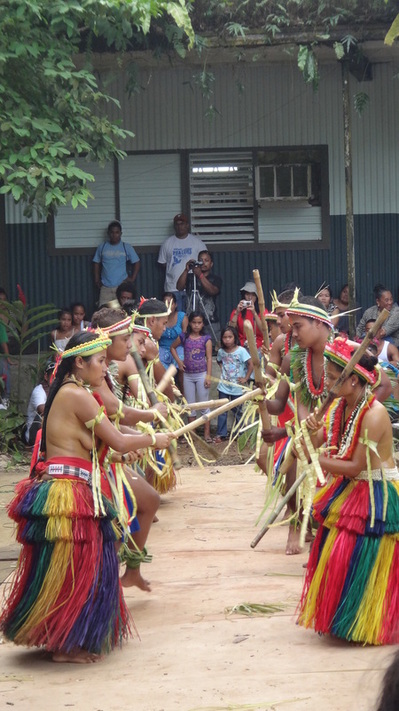 Now that's a lot of culture --- a Yapese dance on FSM Cultural Day  Talk about loss of culture - 1892, at the Carlisle Indian School, in Carlisle, PA  Recent panorama shot from atop Sokehs Rock
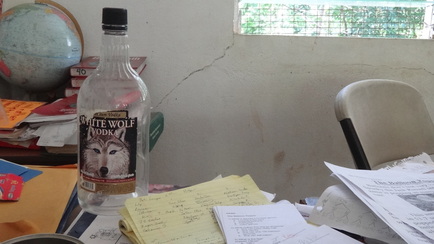 A teacher's desk. It's probably just water in there. Probably... _ I have written extensively of the many roadblocks and frustrations we encounter throughout our work here in Pohnpei, but trust me, I barely scratch the surface. I knew when I came here it wasn’t going to be easy and our collective perseverance and resolve would be tested. Of course though, knowing something in your head is entirely different than experiencing it firsthand. I remember the exact moment when all this hit home. Way back in October, a few weeks after I arrived, Mr. B and I were in a slight state of shock with just how bad the schools really are. We were sitting in the car about to leave from a school that had only one teacher for three grades. Most of the kids were sitting around or had gone home, even though it was only 11:00. Despite the negative circumstances Mr. B was often making jokes and laughing about the whole thing. I said while laughing along with him, “Mr. B, what are we going to do?!? Why are you laughing?!?” His response was priceless and classic Mr. B ---
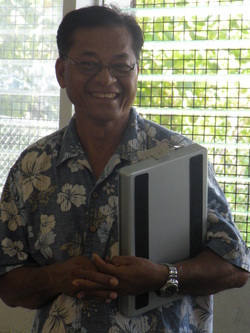 _
“If you do not make things funny, you will get heart attack.”
_While his response obviously made me laugh, there is so much truth to it. This attitude has served Mr. B extremely well throughout his life on Pohnpei working to help his people. Indeed, he very well might have had a heart attack by now if he didn’t have this approach!
Today we went to our largest adopted school which has six classes – two classes each for 6th, 7th and 8th grade. There were only three teachers and the principal wasn’t present. This left each teacher responsible for their 20 some kids, plus the 20 some other students. When the teachers are left with this predicament they stay with their class and give the other class a bunch of busy work a few times throughout the day. You can imagine how productive a group of 6th graders are when left alone to do busy work from a textbook. This happens all the time on Pohnpei – I have never heard of substitute teachers.
When we got to the 8th grade classroom, and saw that there was only one teacher for the two classes, I had to step outside the classroom and remember Mr. B’s wisdom. I had seen both 8th grade teachers earlier that morning, but one left for Kolonia during lunch. Heck, without any principal, who is there to enforce anything? It's worth noting that this is one of our better schools!
Despite all the frustration, I have learned, and rather quickly, that you can’t expect change to happen quickly, if at all. What I mean by this is that change can take years, even decades. In order to survive days like today, it is critical to have an even-keeled mindset. And it helps for personal health, when working in a place like Pohnpei, to take everything with a grain of salt, and if at all possible, laugh about the craziness.
There are countless lessons I’ll take with me when I leave this island, and this will be at the top of the list. We all encounter difficulties but if we can laugh about it and recognize how imperfect this world is and all the people in it, then we’ll be better for it. And less likely to get a heart attack. 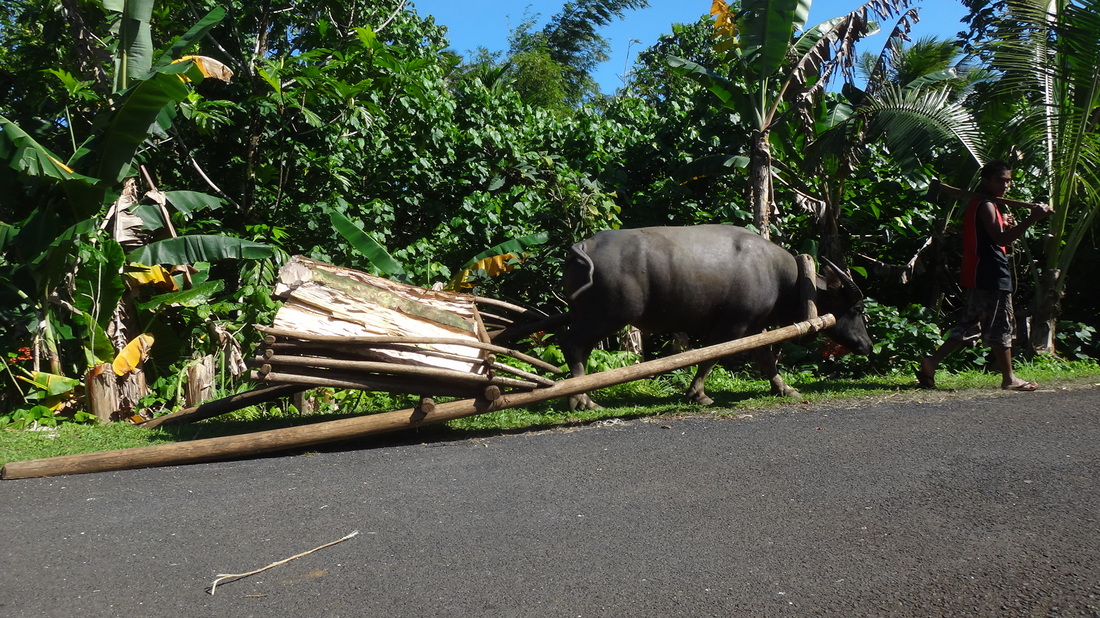 Just a normal scene witnessed on our drive back to town today 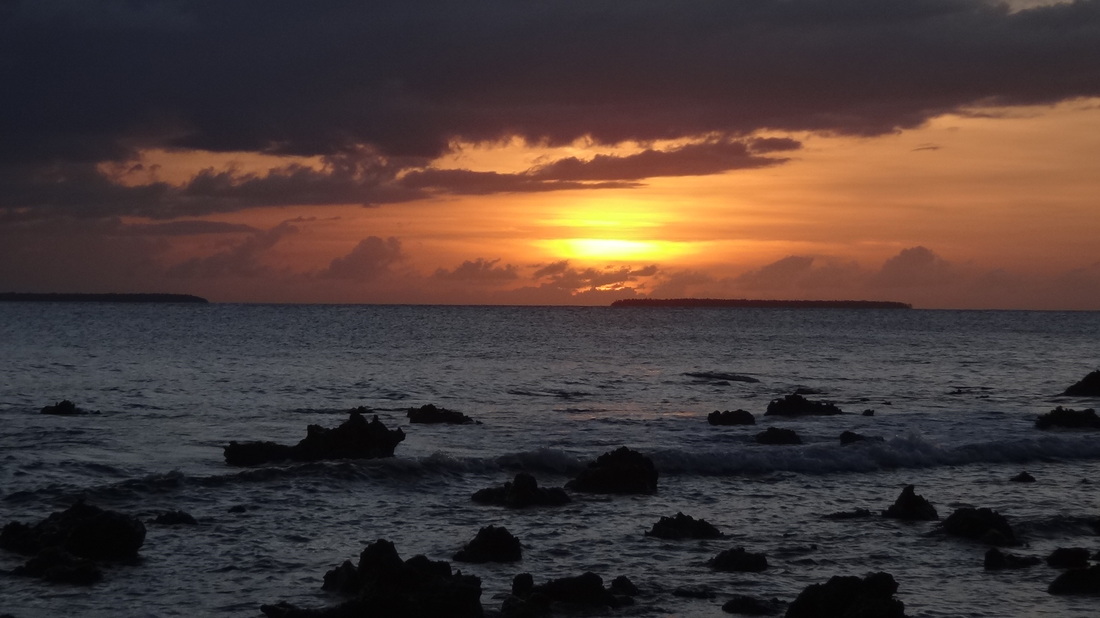 Sunset on the tiny island of Black Coral this past weekend, looking out to Ahnd Atoll
|









